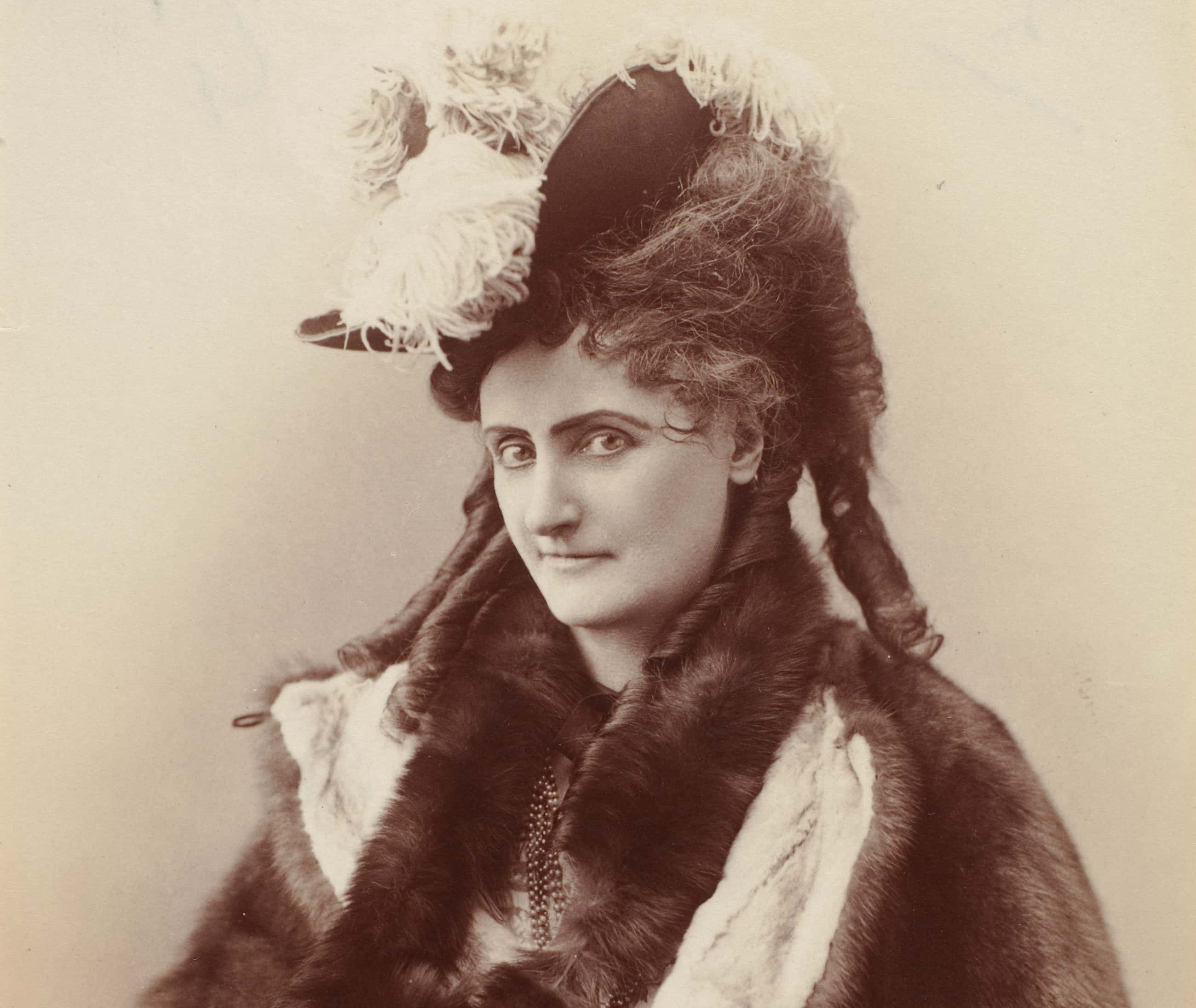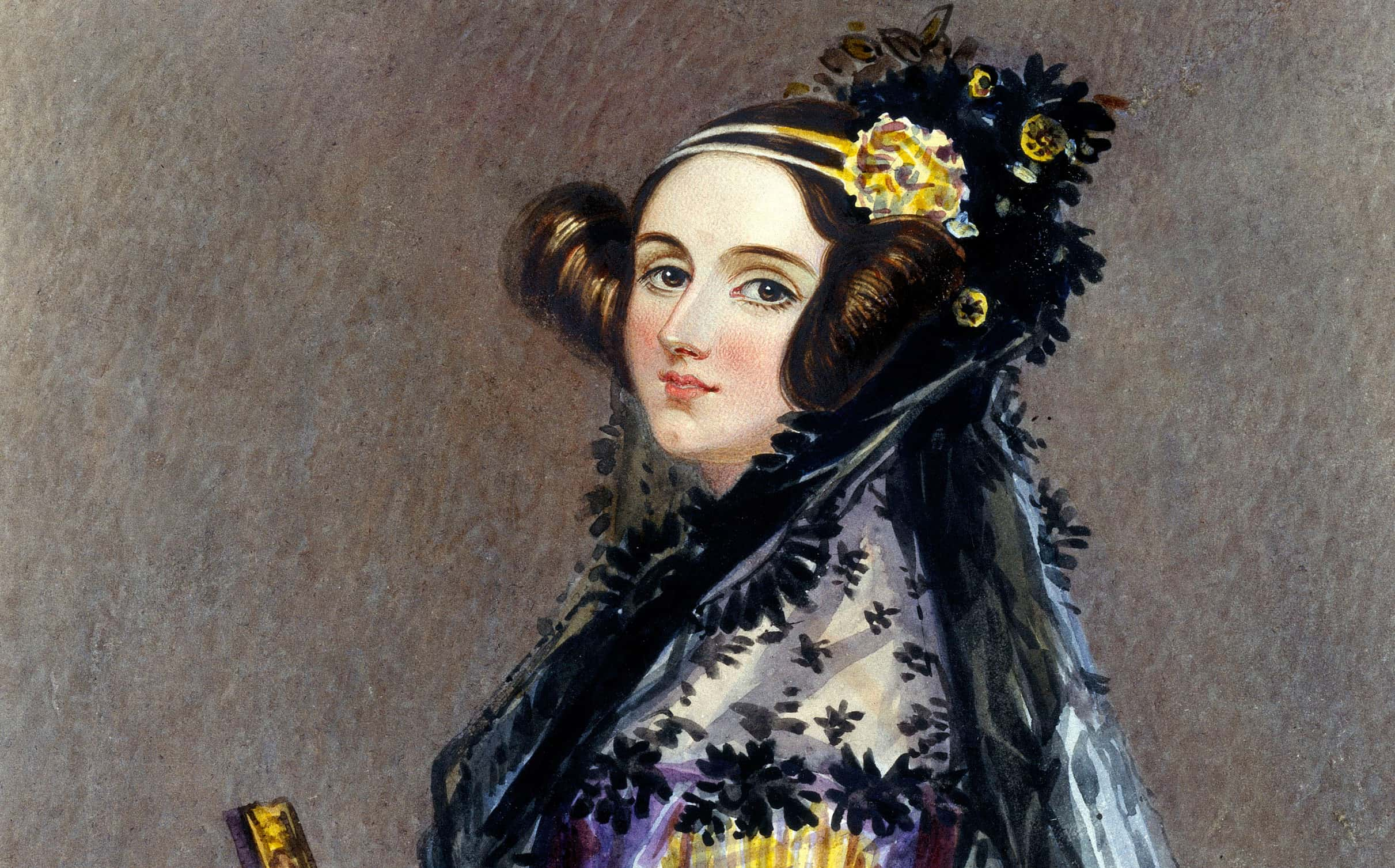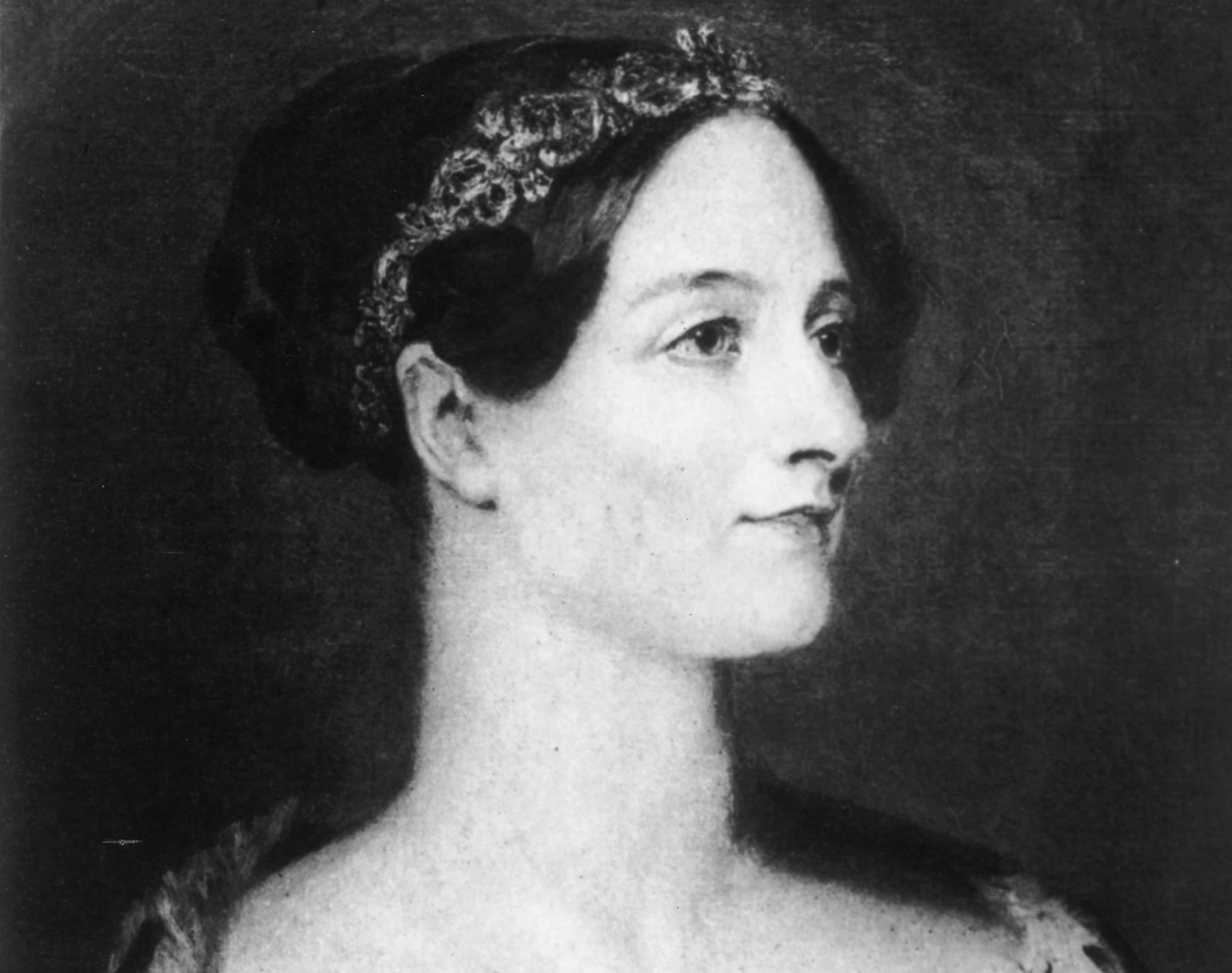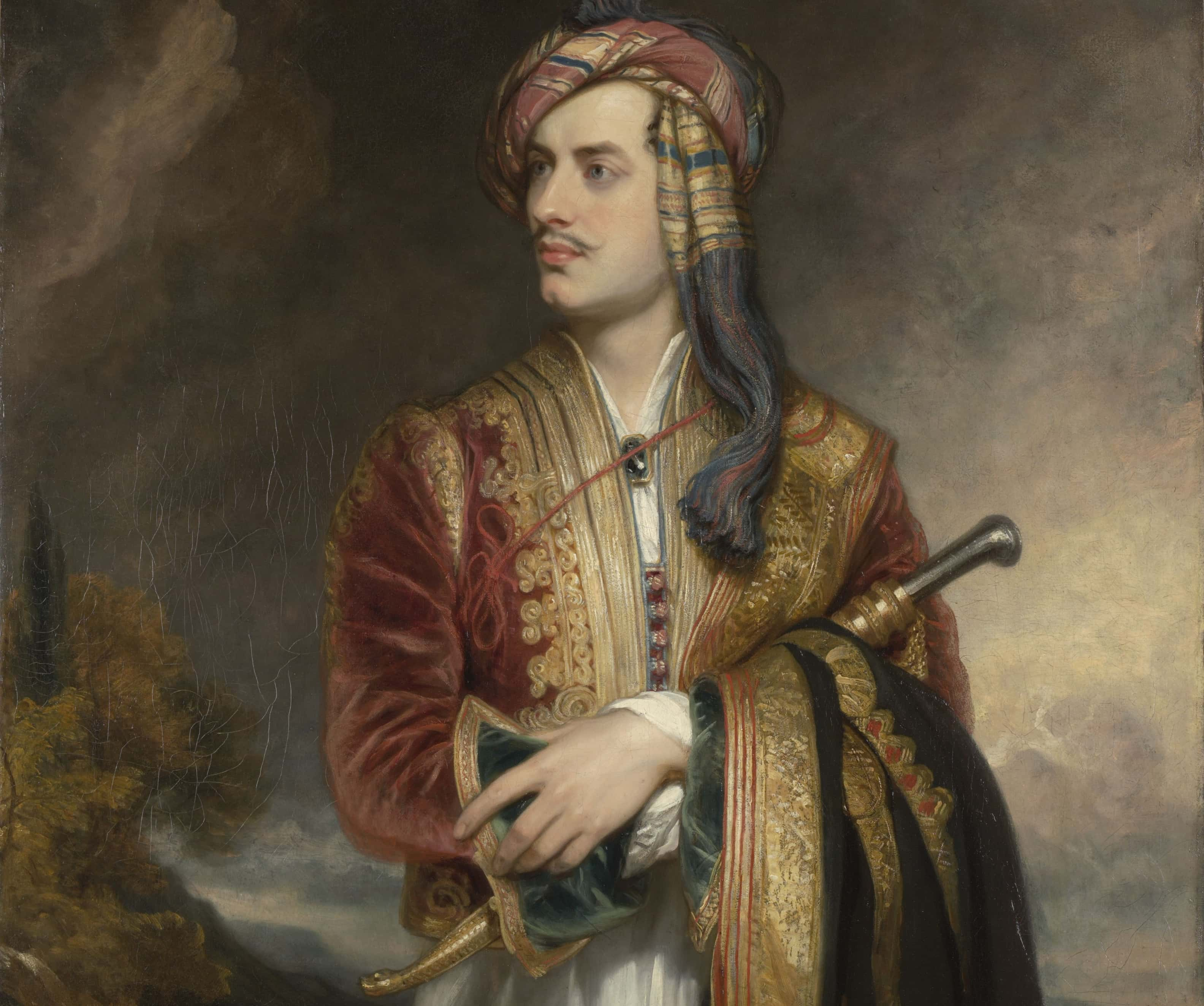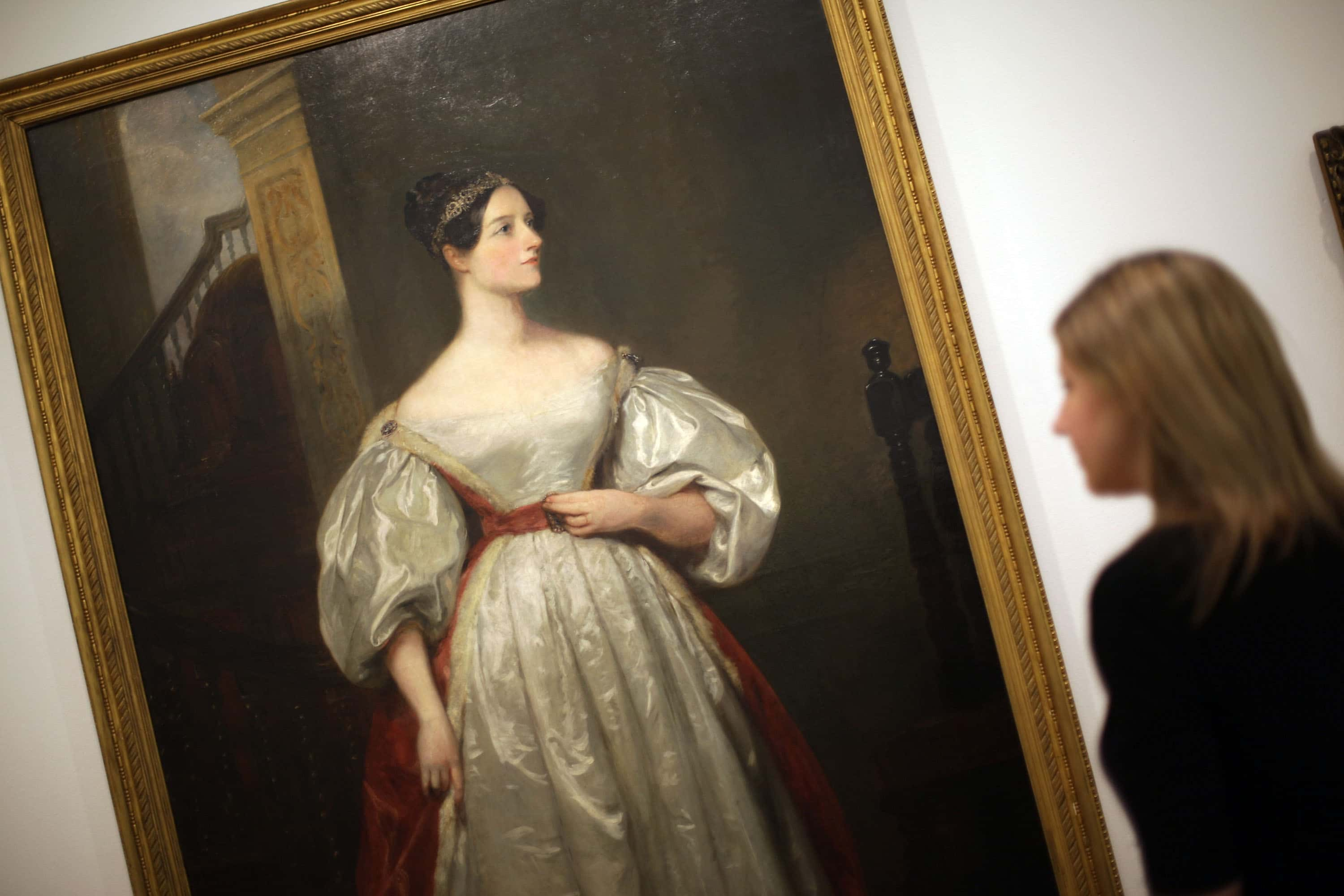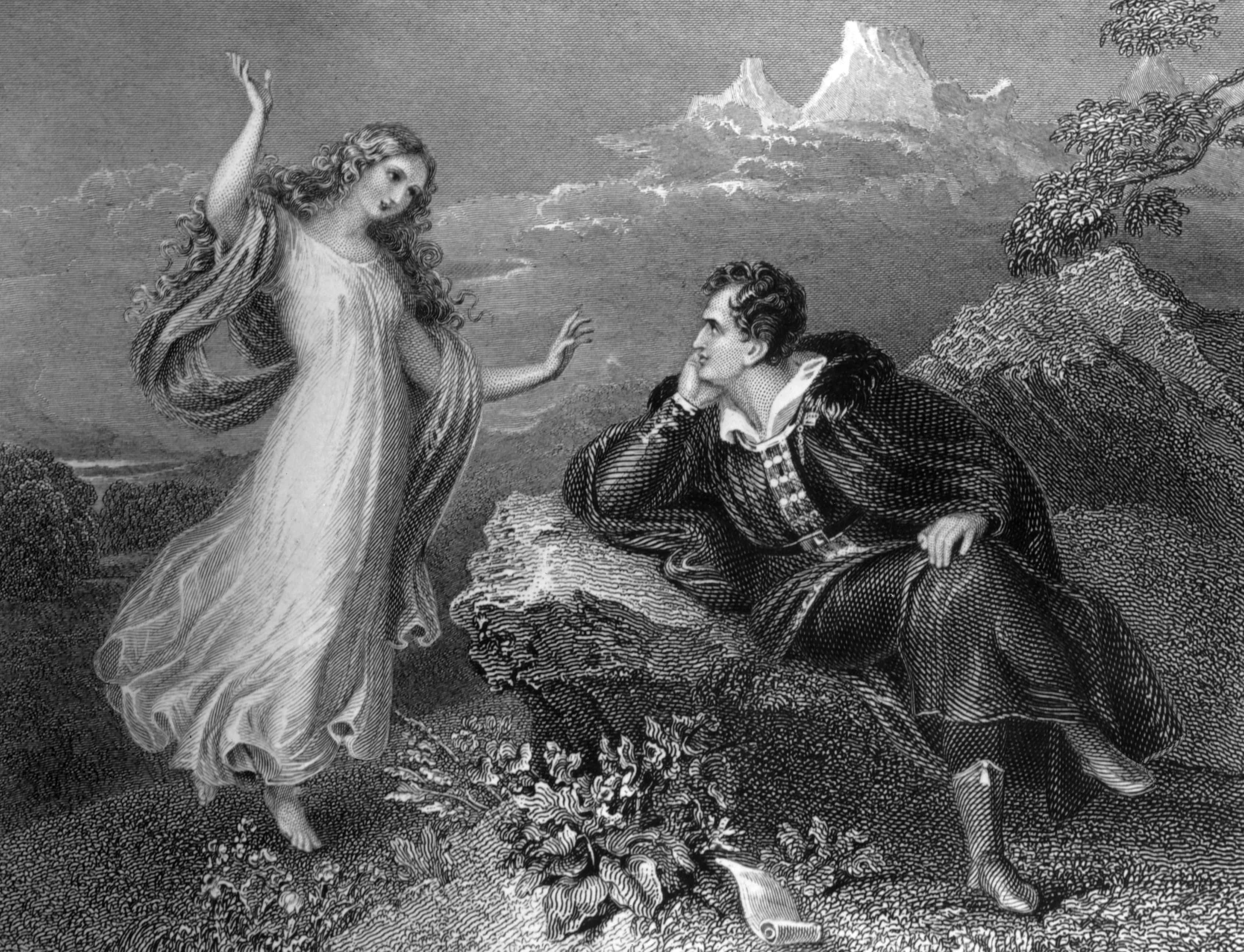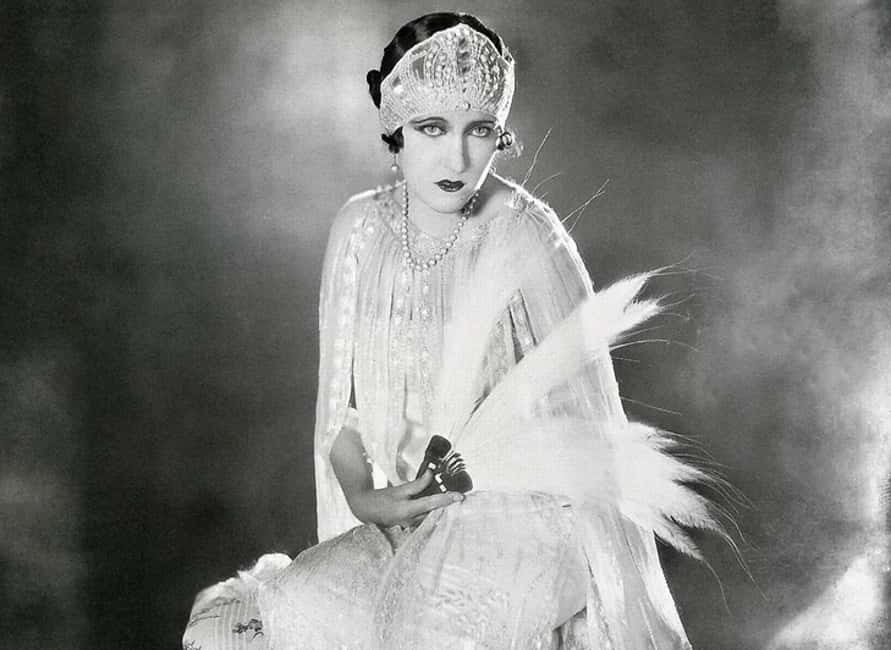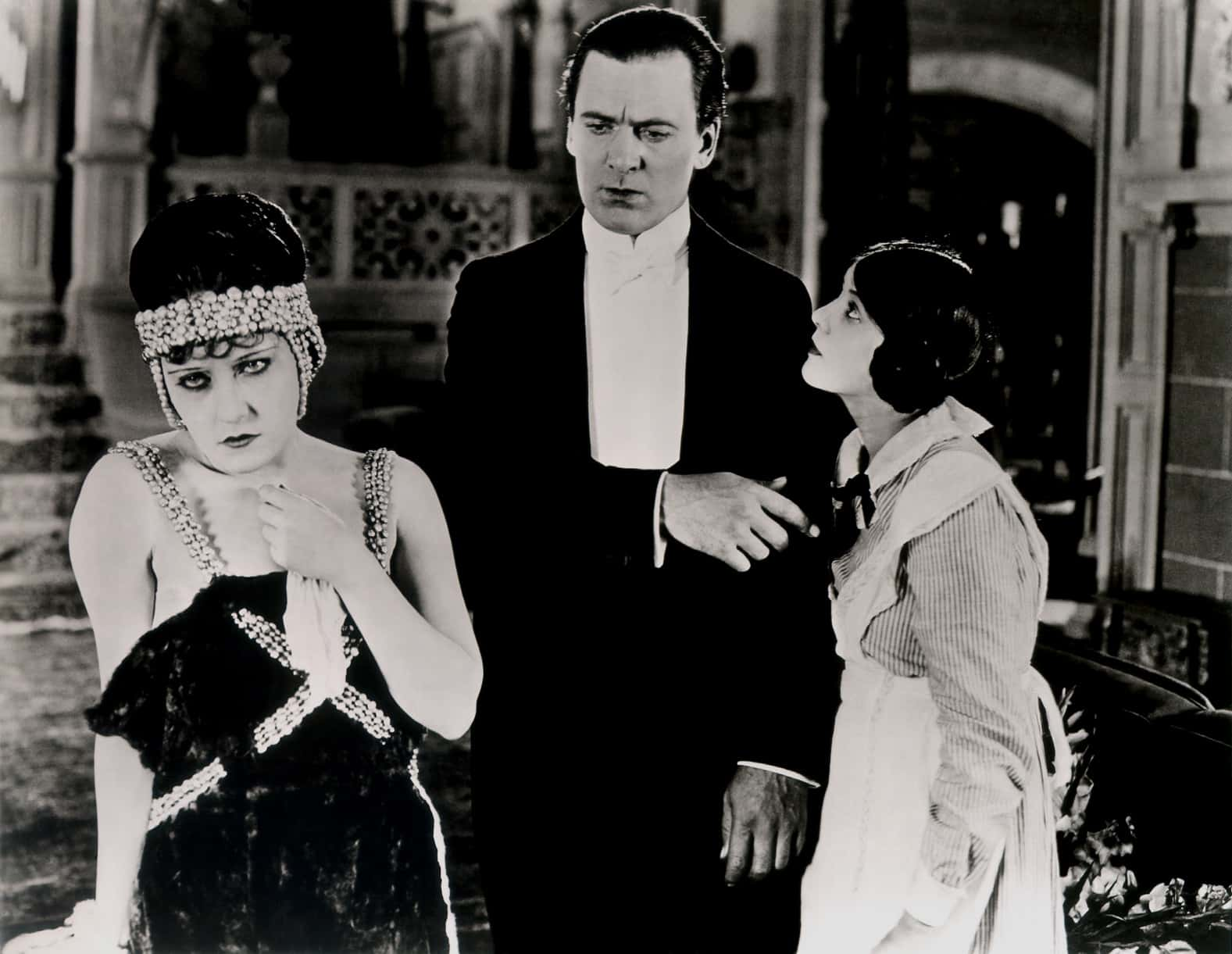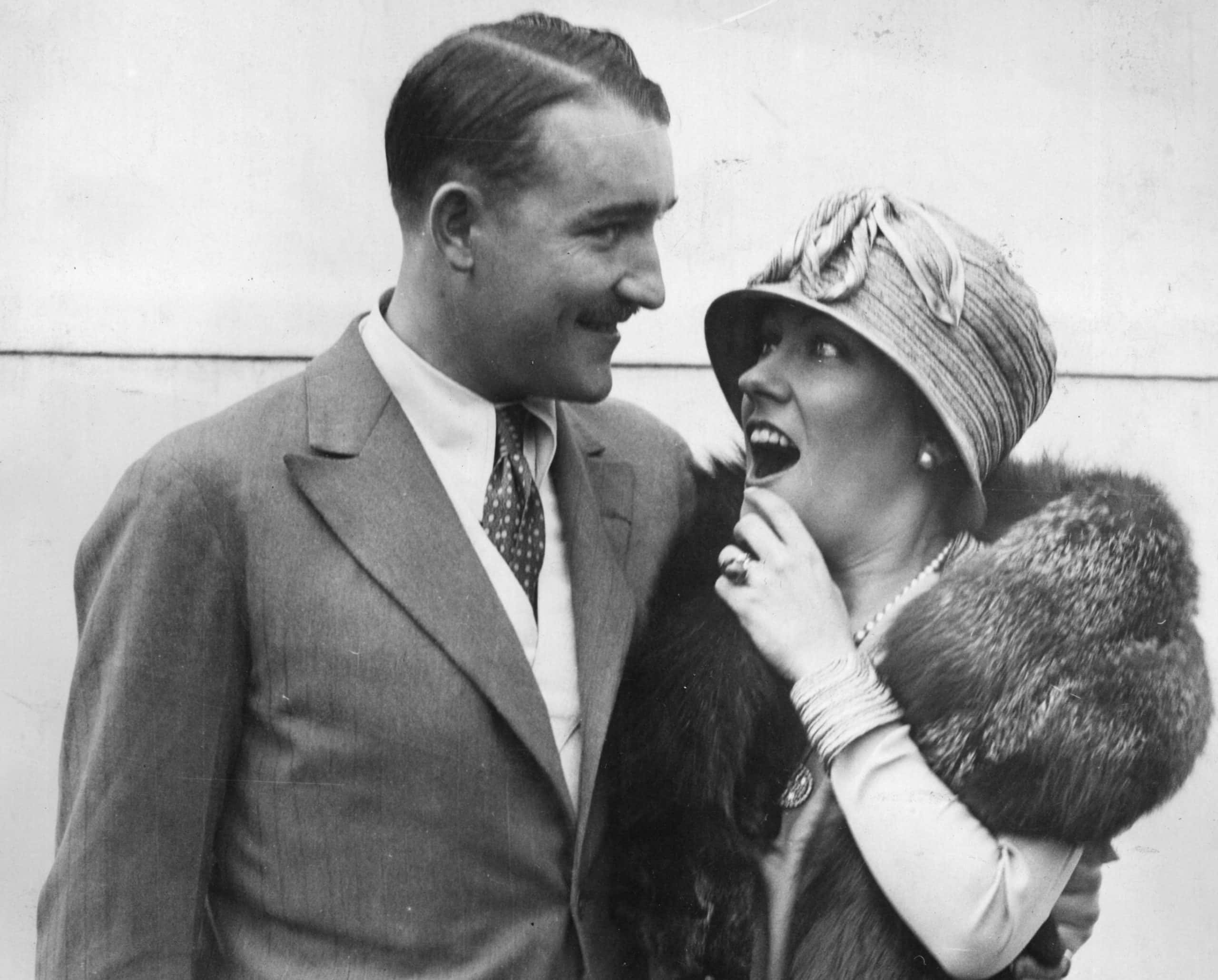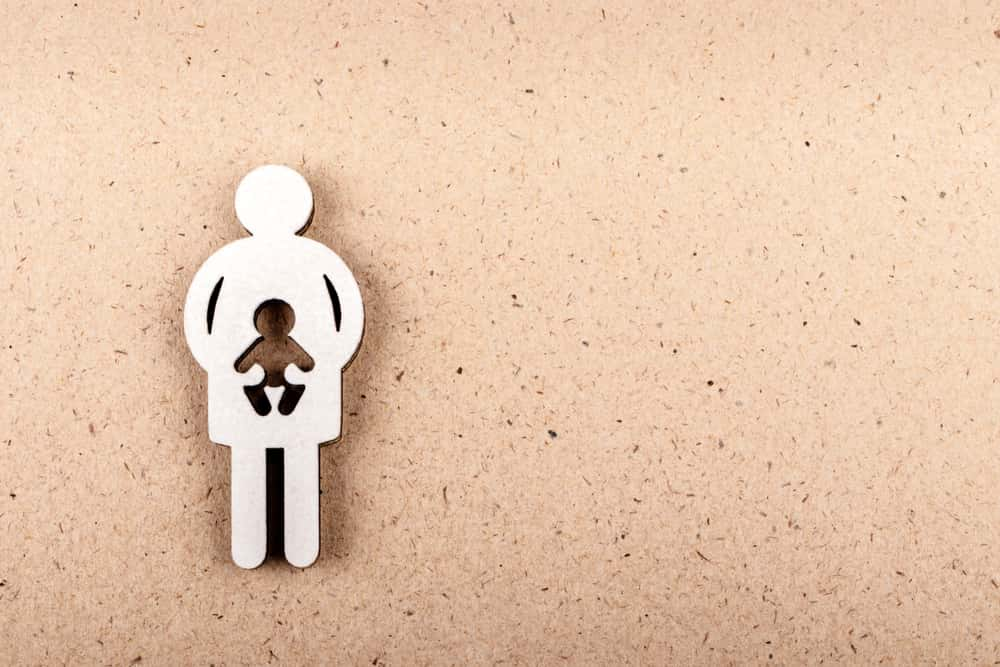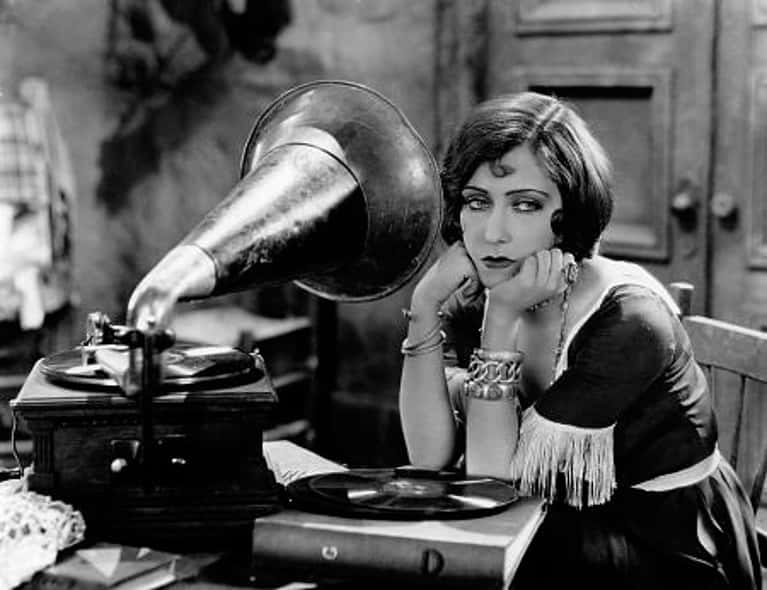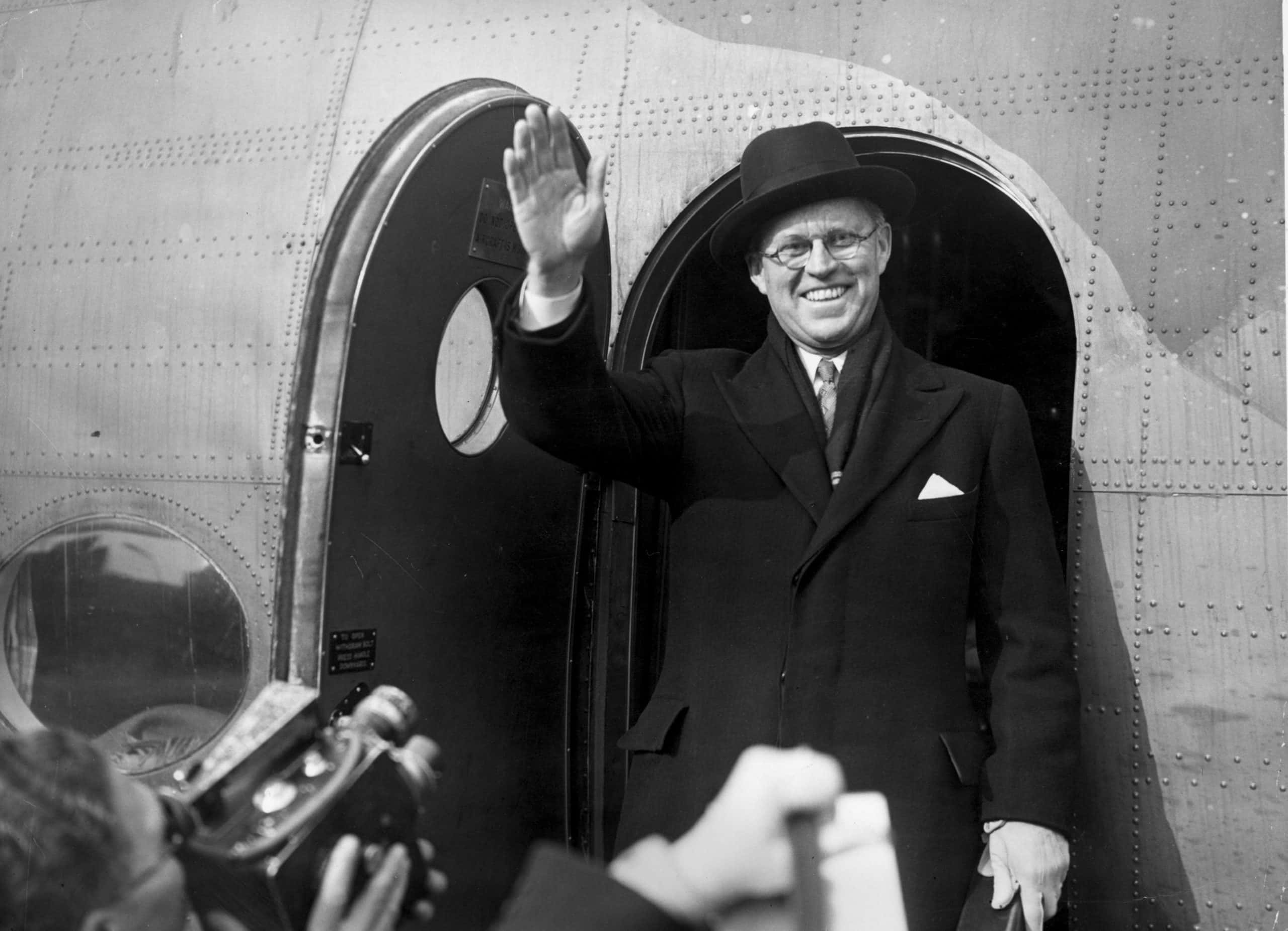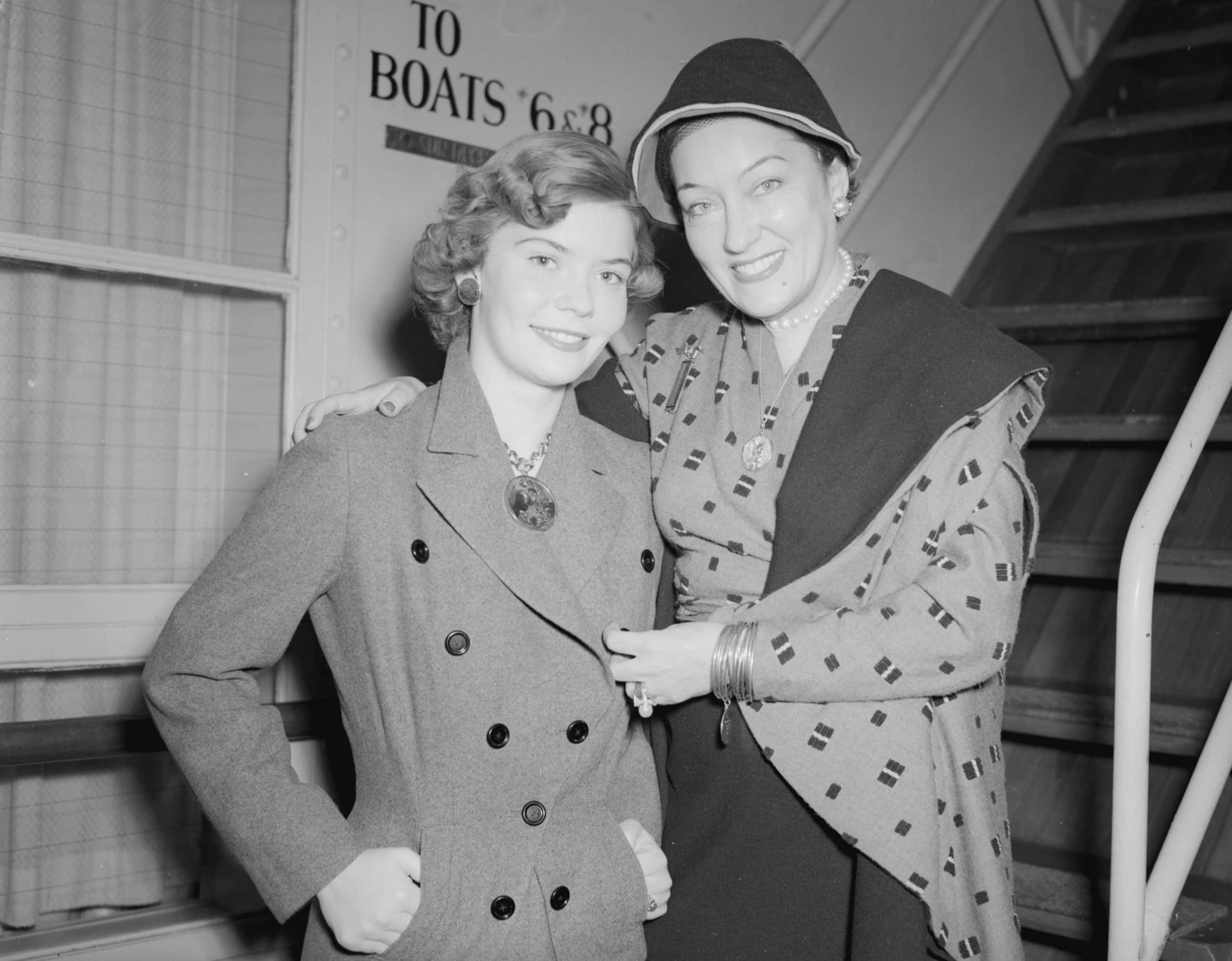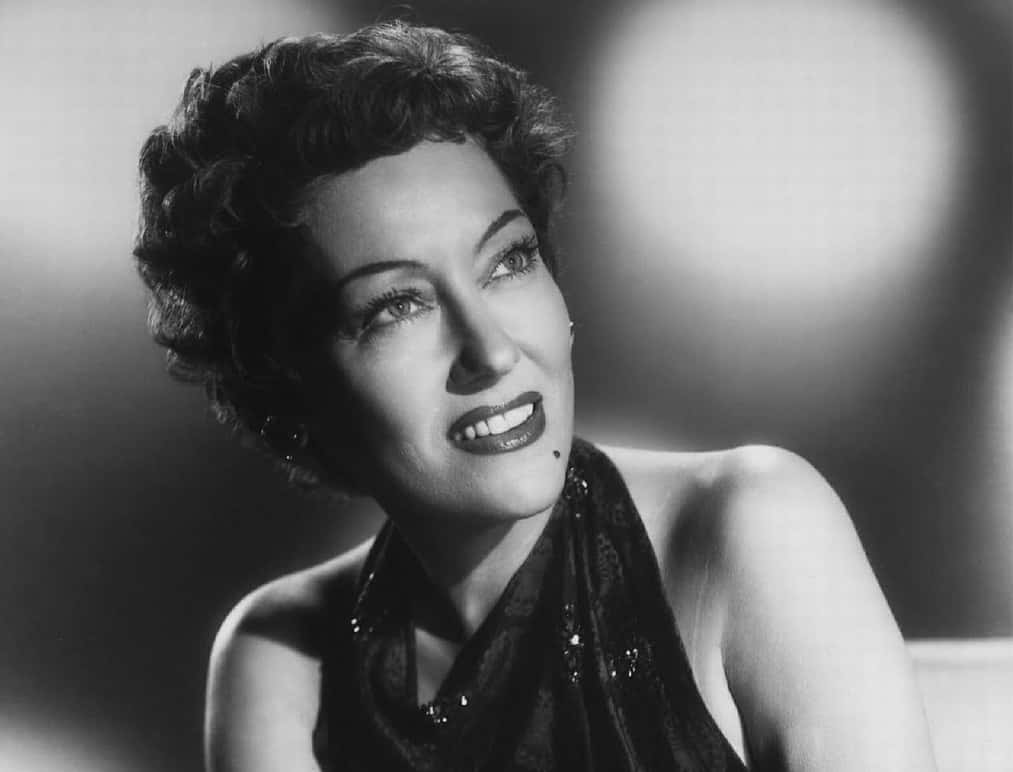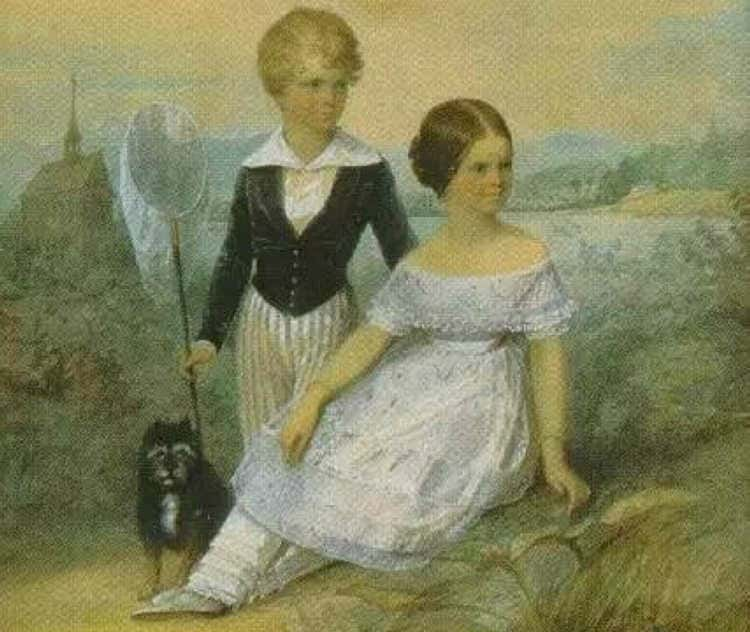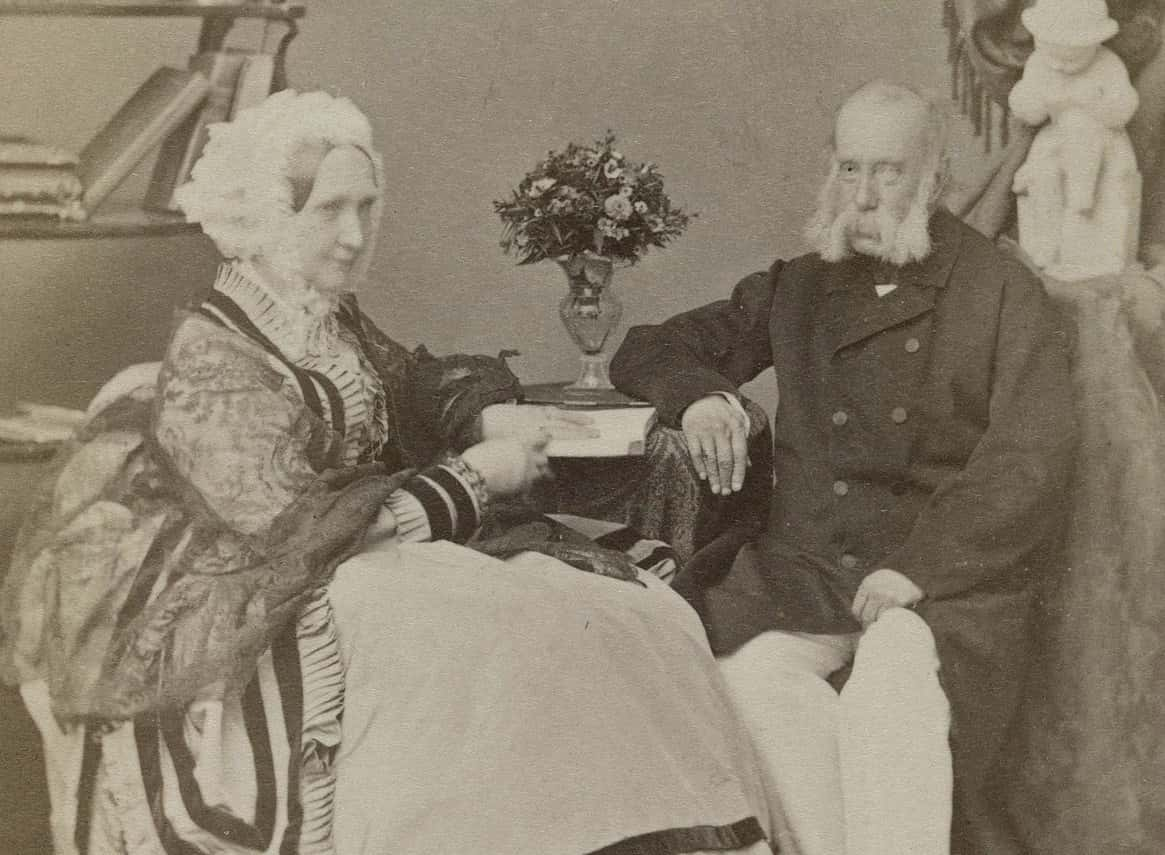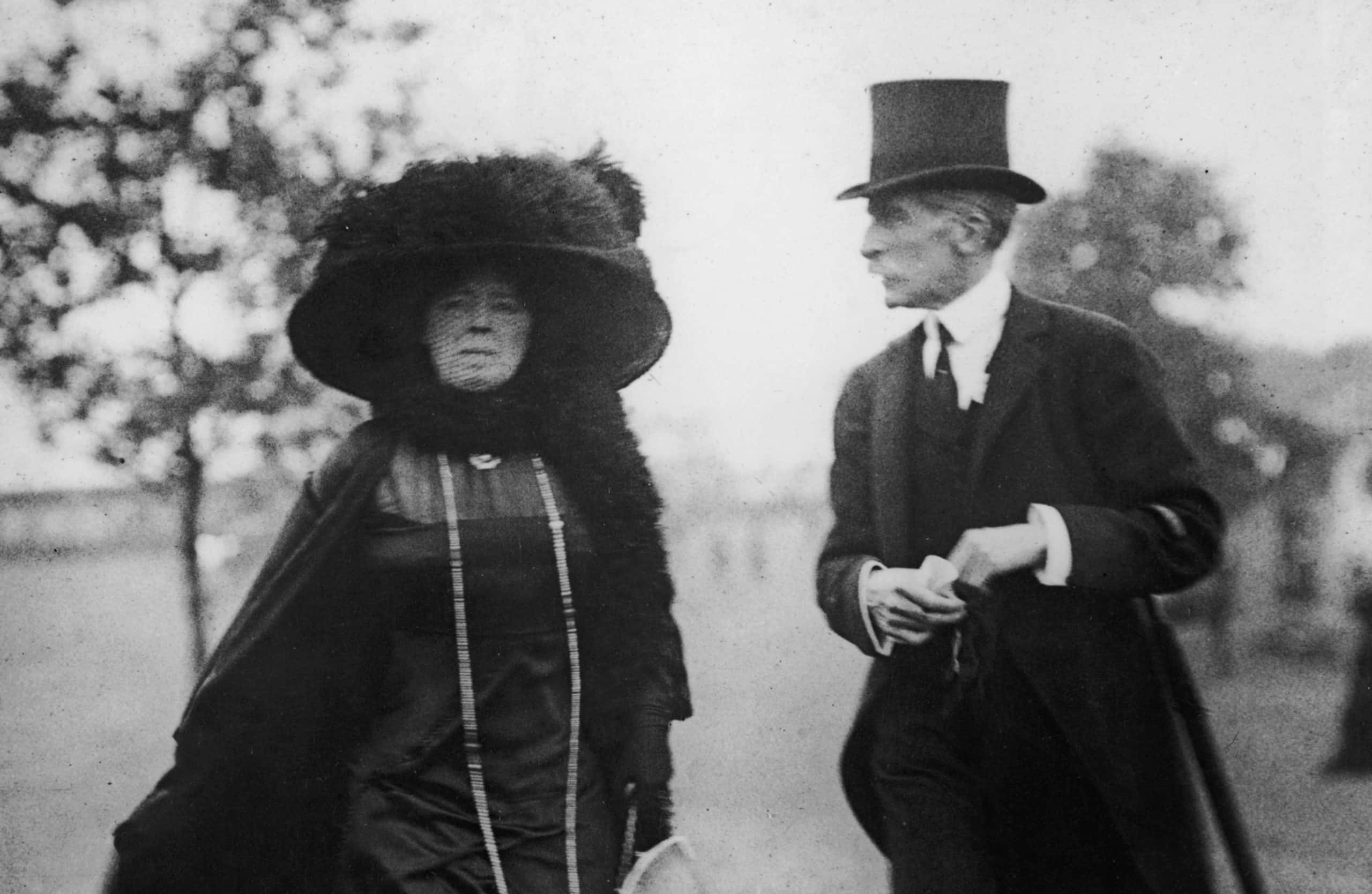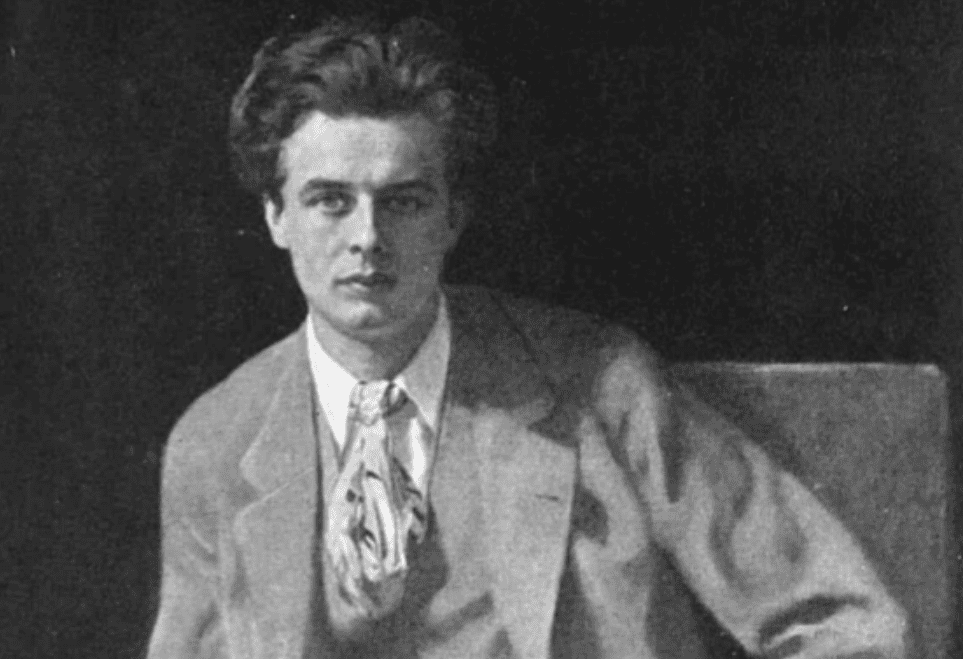They say that behind every great man, there's a great woman. From ruthless queens to cruel femme fatales, their stories have gone untold—until now. Discover why history has made us forget names like the Countess of Castiglione, Empress Elisabeth, and Nancy Cunard.
1. Skip to the End
Born to a family of minor nobles in Tuscany on 22 March 1837, the infamous Countess of Castiglione was formally named “Virginia Elisabetta Luisa Carlotta Antonietta Teresa Maria Oldoïni.” Understandably, the future spy and model was known to her loved ones more simply as “Nicchia.”
2. Sow Your Wild Oats Before You Spit Them out
Virginia Oldoini earned her famous name and title through marriage. At the age of 17, she was wed to Count Francesco Verasis di Castiglione, who was 12 years older. They only had one child, a son named Giorgio. Right before her arranged marriage to this older man, Oldoini embarked on an affair with a naval officer, which suggests she desired things beyond domestic bliss from the beginning.
3. Belle of the Ball
Oldoini followed her husband to the court of King Victor Emmanuel II of Sardinia-Piedmont (today we just call it “Italy”). The Countess quickly outshined her hubby, winning ministers and courtiers alike over with her charm. In fact, she was known to the court as “la divina contessa.”
4. CIA: Cute Intelligence Agency
Oldoini’s true career, however, began when she was “discovered” by her cousin, Count di Cavour. Her first gig wasn’t for modeling. He had a much darker profession in mind: espionage. Cavour saw the value of Oldoini’s charms and singled her out as the perfect candidate to deploy to the Parisian court of Napoleon III.
5. Lie Back and Think of Italy
In 1855, the Countess of Castiglione was tasked with pushing the cause of Italian unity onto Emperor Napoleon III of France—even if it meant pushing other parts too. Her cousin reportedly told her, “succeed by any means you wish—but succeed!” If that’s not a state-sanctioned license to commit adultery, I don’t want to know what is. Indeed, political gears weren’t the only things that got turned, and Castiglione soon became the French ruler’s mistress.
6. I’m Keeping the Title
Oldoini’s husband did not take well to his wife becoming a spy and seducing the French emperor. Their very public affair led him to demand a marital separation. Nevertheless, she would address herself as the “Countess” for the rest of her days…
7. Hot Gossip
From 1856 to 1857, Oldoini served as Napoleon III’s mistress. This new gig brought her into close contact with powerful folks like Queen Augusta of Saxe-Weimar and the first German chancellor, Otto Von Bismarck. Between rubbing elbows with elites, she passed intelligence from this powerful court to her allies in Italy.
8. Broken Heart Queens Club
By 1860, Oldoini’s affair with Napoleon III had soured, and she had completely lost favor at his court. The reasons for her sudden fall from grace remain a private mystery.
9. The Eyes Have It
To no one’s surprise, the Countess of Castiglione was drop-dead gorgeous. She is typically described as a wavy-haired blonde with pale skin, delicate features, and an oval face. According to lore, her eyes could change color from green to an almost supernaturally blue-violet. Pretty handy trick to have if you’re a model and spy.

Sign up to our newsletter.
History’s most fascinating stories and darkest secrets, delivered to your inbox daily. Making distraction rewarding since 2017.
10. Dress up, Not Mess up
Not all spies are subtle. Case in point: The Countess of Castiglione favored extravagant costumes. She became notorious for her elaborate entrances, which sometimes included a “Queen of Hearts”-style outfit.

11. The Original Influencer
Oldoini’s modeling career began when she was still royal mistress at Napoleon’s court. Starting in 1856, she sat for court photographers Mayer and Pierson. Her relationship with Pierre-Louis Pierson would go on for four decades, and produced over 700 photographs.
12. This Little Piggy Asked to Be Censored
Some of Oldoini’s photos put her in extremely “risqué” positions (at least by 19th century standards). In such scandalous poses that—gasp!—exposed her bare feet and legs, her head is cropped out.
13. Labor of Love
Oldoini’s “career” as a model actually cost her money. To fund her modeling ambitions, the Countess invested her personal fortune, and even went into debt.
14. One of the Boys
Despite her own feminine charm, the Countess of Castiglione was not fond of the ladies. At those French court gatherings, she often refused to even speak to other women. Maybe the OG beauty queen didn’t like competition…or she only had time to deal with the country’s most powerful. In 19th-century Europe, this often translated to “men only.” Sorry, girls.
15. Too Hot to Be a Writer
At one point, the Countess tried her hand at writing. Her autobiography was to be humbly titled The Most Beautiful Woman of the Century. Tragically, she never completed the book. She was probably too busy being beautiful.
16. The Conceit Has Limits
The Countess’s legendary charm was not universally effective. Someone else observed that while she was definitely beautiful, that self-obsession streak could wear thin, and “after a few moments…she began to get on your nerves.”
17. Less Money, No Wife, More Problems
In addition to cheating on her husband, the Countess of Castiglione apparently bankrupted her beau with her extravagance. He had originally gone with her to that diplomatic mission to Italy—but he missed that government “seduce the Emperor is necessary” memo, and spent all of his money trying to keep her happy.
Financially and sexually humiliated, the Count left France—and his wife. He declared, “Our separation is irrevocable!” and never reconciled with Oldoini.
18. Twelve Hours of Hard Labor
At the height of her fame as a courtesan, the Countess could still rake it in. Reportedly, Richard Seymour Conway offered 1 million francs for just 12 hours of her “company.”
19. Dear Penthouse
Napoleon III was not her only lover. The famed noblewoman had a string of other affairs, which she documented in her diary. Contrary to being illicit and hushed about it—as the diary form would suggest—she wrote about each flirtation as a celebration of her own desirability.
 Shutterstock
Shutterstock
20. Super Duper Model
Some scholars argue that the Countess of Castiglione wasn’t just the first model of our time—she was the first supermodel. The noblewoman transcended the dress to become a cultural symbol in herself. To quote one scholar, "In the case of Virginia Oldoini, her strong personality is the real content of the pictures. People didn’t care about the clothes anymore, because during the time she became a star."
21. Putting the “Snap” in Snapchat
Oldoini’s fashion shoots also doubled as warning shots to her enemies. When her estranged husband tried to claim custody of their son, she sent him a disturbing photo. At first glance, it simply appeared to be her with loose, flowing hair—but when her husband looked closer, he saw the photo's true meaning. The Countess had a knife in her hand. Naturally, the photo was titled “La Vengeance.”
 Shutterstock
Shutterstock
22. She Wears Her Heart (and Your Hubby) on Her Sleeve
Dressed in her Queen of Hearts gown, Oldoini once scandalously entered a royal ball on the arm of her (married) lover, Emperor Napoleon III, right in front of his wife. However, the empress was ready with an utterly scathing insult. The spurned wife reportedly gave Oldoini’s sexy outfit a once-over and told her, “The heart is a bit low, Madame.”
 The Contessa
The Contessa
23. If I Can’t See Me, You Can’t Either
Oldoini did not cope well with aging. Unwilling to confront her fading looks, she spent her final years in black-colored rooms with closed blinds and no mirrors. Not even she was entitled to look at the waning beauty of the Countess of Castiglione.
 Shutterstock
Shutterstock
24. The Dark Ages
Despite her self-exile later in life, the Countess still found time to do the occasional photoshoot. She and Pierson took up the camera work again—but critics did note how these projects were smaller, shorter, and even “more morbid, more disturbed, more deranged" than before.
25. Not a Morning Person
In her later years, the Countess did leave her house now and then—but only under veils, and only with the cover of darkness to hide her “shameful” age.
26. The Prodigal Son Doesn’t Return
There may have been an even more tragic reason for Countess of Castiglione’s self-seclusion. In 1879, her beloved and only son Giorgio passed away from smallpox, predeceasing his mother by 20 years. Suddenly, her regime of funeral black rooms, veils, and never leaving the house makes tragic sense…
27. Non-Motion Picture Show
It was decades in the making, but the Countess was finally ready to show her photos to the public at the turn of the century. The aging model had big plans to display her collection of over 700 photos at the Exposition Universelle in 1900 in her biggest group photo display yet. Most tragically, this was not to be…
 Flickr
Flickr
28. Maybe Next Century
After a lifetime of being camera-ready, Virginia Oldoini, the Countess of Castiglione, spy and mistress to rulers, passed away on November 28, 1899. She would not live to see the Exposition Universelle, where she planned to debut her photos. By dying in 1899, she also missed out on the 20th century—an era where photography would only continue to dominate media society.
29. They Don’t Make a Hallmark Card for This
Ada Lovelace was born Augusta Ada Byron in December, 1815 to the notorious poet Lord Byron. Her father was incredibly disappointed at her birth. He had expected a “glorious boy" and actually cried, “Oh! What an implement of torment have I acquired in you!”
30. Four Is a Crowd
Imagine evicting your own infant daughter. Well, that’s what Lord Byron did when Ada was just a few weeks old. Using his legendary way with words, Byron wrote to his wife Lady Annabella Byron and said that she and their daughter needed to leave his house ASAP on account of his plans to pursue an actress. After all, it’s hard to get stage stars “in the mood” with your wife and crying baby in the house.
31. Who’s Your Daddy?
Lovelace wouldn't even see a picture of her father until she was 20 years old. All things considered, can you blame her mother?
32. Count Your Way to Mental Health
Lovelace owes her robust education in science and math to her own math prodigy mother Lady Annabella Bryon, as well as to said mother’s debilitating fear that Ada would inherit her poetic father’s “insanity” if the girl didn’t have honest and non-romantic pursuits. I guess this meant math, the least sexy subject known to humanity.
33. See Ya Never!
Lord Byron left England just months after Lovelace was born. He died when she was eight, having never seen his daughter again.
34. Regrets
However, one of Lord Byron’s biggest regrets in life was not knowing his daughter. As he gave his last breaths at the young age of 36, he cried out a heartbreaking confession: “Oh, my poor dear child!—my dear Ada! My God, could I have seen her! Give her my blessing.”
35. Horse Girl
One of Lovelace’s earliest blueprints was for a horse-powered flying machine. The 12-year-old Ada told her mother about a plan to “make a thing in the form of a horse with a steam engine in the inside so contrived as to move an immense pair of wings, fixed on the outside of the horse.” Look, every girl has a Pegasus phase, okay?
36. A Picture Says a Thousand Numbers
Thank Lovelace for reaction gifs! She is one of the first voices to consider that computers could do more than just crunch numbers. In her mind, there was also a possibility they could digest writing, music, pictures, and even sound.
37. The Family Jewels Are a Small Price to Pay for a Bit of Fun
You’re never too smart for a gambling problem. Lovelace had a difficult time controlling herself at the horse tracks; she once lost £3,200 pounds (a fortune in her time) on a single race. At one point things got so bad, Lovelace sold her family diamonds just to keep afloat.
38. Take a Chance on Science
Lovelace once even teamed up with a bunch of con artists in an attempt to develop a “predictor” for horse races. Reports exist of Lovelace exchanging a special book once a week with her scientific mentor, Charles Babbage, which may have contained notes for a program that could fix the races.
39. All Around Me Are Familiar Faces
Lovelace was not considered a great beauty of her age, but at least she looked like her father. An old friend of Lord Byron described the female programmer as “a large, coarse-skinned young woman but with something of my friend's features, particularly the mouth.”
40. Down for the Count
Brains don’t always equal brawn. Case in point: Lovelace spent much of her youth sick and disabled. She suffered from serious migraines that affected her vision, and was paralyzed from about age 14 to 16 after a terrible fight with measles. She had to walk with a crutch for years.
41. Lady Tinkerbell
Lovelace went by the name of “Lady Fairy” to her intellectual partner, Charles Babbage. This was perhaps due to her delicate health, and because her early inventions reflected her obsession with flight.
42. The Wings Beneath My Wind
The young Lovelace was so obsessed with flight and wings that she wrote a book called Flyology. Her work detailed the anatomy of different kinds of birds in all their varied size and glory.
43. More Than an Okay Face
As a 17-year-old debutante at the Court, Ada was actually quite popular. An unconventional “belle” for her age, she drew attention not for her brilliant looks but for her bright mind.
44. Thanks for the Name Drop
At the age of 20, the unconventional Ada made the conventional 19th-century move to marry respectably. In 1835, the young scholar wed William King-Noel, the Earl of Lovelace. He was 10 years her senior. In addition to several really fine manors, Lord Lovelace gave Ada the name by which she would be known to the public for centuries after.
45. Not Another Byronic Hero
Lovelace’s first child, Byron, was born a year into her marriage and is named after his scandalous maternal grandfather. Unfortunately, Byron King-Noel also followed gramps by dying young at the age of 26. Leaving no children, the real heir to the Byronic legacy became Ada’s younger son, Ralph.
46. She Loves Me Not
Ironically, Lovelace's "moral instructor" once encouraged her to cheat on her husband. In 1843, William Benjamin Carpenter was entrusted to educate Lovelace and her children. Carpenter himself was married, and tried to get Lovelace to at least confess to mutual feelings toward him; he argued that his own marital status would somehow prevent their conduct from being “unbecoming.”
Nice try, Willie. Lovelace quickly cut things off.
47. Not Quite a Lady
Though she grew up in luxury, Lovelace somehow missed the memo on female decorum. One gossip rag at the time described her as “the most coarse and vulgar woman in England,” a title that her libertine father probably would have admired.
48. Burn After Kissing?
Lovelace’s life was plagued with rumors of infidelity. Most notably, she was accused of having inappropriate relations with John Crosse, the son of one of her colleagues. No one knows for sure if they consummated their relationship, but after Lovelace died, Crosse destroyed all their correspondence as part of an ambiguous legal deal.
Adding fuel to the fire, she even bequeathed him all the heirlooms her father had given her.
49. Don’t Do as I Do
Although Lord Byron was absent from his daughter’s life, he was a self-aware enough parent to hope Ada wouldn't take after him in any way. To quote the poet himself about a report on his daughter: “I am told she is clever—I hope not! But above all, I hope she is not poetical; the price paid for such advantages, if advantages they be, is such as to make me pray that my child may escape them.”
50. Ada Enchanted
One of Charles Babbage’s other nicknames for Lovelace was “The Enchantress of Numbers.” This moniker was in honor of her rich analytic skills.
51. The First in Theory
Lovelace is credited with the first published algorithm ever programmed specifically for computer implementation. However, it was only ever theoretical, and never put to the test in real life.
52. Made for RAM, Not the Runway
Contrary to those ladylike engravings of Lovelace, our favorite mathematician was not a fashionista. In fact, she had an infamously drab sense of fashion. Even her housekeeper once described her as “not so well dressed as her maid.” People often couldn’t believe the too-glam-for-his-own-good Lord Byron fathered such a dull child.
53. Mommy’s Little Deviants
It would seem that Lovelace’s children inherited the family eccentric streak. Her eldest son, Byron, ran away from home to the high seas and worked as a carpenter. Her younger son Ralph was also an adventurer who trekked Iceland as a mountain climber.
54. Horse Girls Die Hard
Even her so-called “demure” daughter Anne married a poet and became the first European woman to cross the Arabian desert. Anne also went into the horse breeding business, and 95% of Arabian stallions in Europe today are descendants of the horses brought back from her travels.
55. Can I Copy Your Notes?
Scientific communication is hard. It’s one thing to have great ideas, but it’s another to express them well. Thank goodness Charles Babbage had Lovelace to translate an Italian article that described his own Analytical Engine. In fact, her appended notes were three times longer than the actual article! Due in part to these creative additions, Lovelace went down in history as the world’s first computer programmer.
56. Opium Haze
Lovelace spent most of her adult life on laudanum (an opium tincture) for her various ailments, and she was seriously addicted. If she didn’t have it, she’d experience withdrawal symptoms such as extreme stress and itchy eyeballs. As soon as she was able to have some, the symptoms relaxed, and she was basically back to normal.
57. Extra Credit
At the age of 18, Lovelace had an affair with her tutor, William Turner (Héloïse and Abelard, anybody?). They even schemed to ditch the books and elope. Unfortunately, her beau’s family recognized the infamous daughter of Lord Byron and squealed to her mom Lady Byron. To avoid a scandal, the ugly sojourn was covered up.
58. The Family that Sticks Together Is Never Surprised
In 1841, Lady Byron informed Ada that she and her cousin Medora were, in fact, half-siblings. It turns out, her scandalous father had been hiding a dark secret. To put it simply (and grossly), Byron might have had an affair with his own half-sister.
By our standards, Lovelace underacted to this incestuous revelation, writing to her mom, “I am not in the least astonished. In fact, you merely confirm what I have for years and years felt scarcely a doubt about but should have considered it most improper in me to hint to you that I in any way suspected." In short, she was not surprised. But...how??
59. Honor Thy Father…in Everything
When confronted with her late father’s alleged incest with his own half-sister, Lovelace put all the blame on Medora's mother, Augusta Leigh. She wrote, “I fear she is more inherently wicked than he [Byron] ever was.” Even smart people have double standards, I guess.
60. A Role Model in Every Way
On 27 November 1852, Ada Byron Lovelace died at the same age as her absent and infamous father Lord Byron. She was just 36, and passed from uterine cancer, which was probably made worse by the common practice of bloodletting. You can always trust a Byron to go out dramatically.
61. Literature Is the Best Medicine
Lovelace had famous friends outside the science world. Most notably, her buddy Charles Dickens was one of the few souls allowed to read to her by her deathbed. While she was laid up in bed, slowly dying, she requested that he read her the scene from his novel Dombey and Son where little Paul Dombey dies.
62. Some Things Can’t Be Forgiven
Ada’s husband William abandoned her deathbed—soon after she made a mysterious confession. No one knows what she said to Lord Lovelace, but whatever it was, it led him to stalk out and never return after August 30, 1852. Historians can suppose it was about her many infidelities, or the truth about her sister Medora. However, we may never know.
63. Windy City Heat
Gloria May Josephine Swanson entered the world on March 27, 1899, in Chicago, Illinois. She was the only child of her two parents Joseph Theodore Swanson and Adelaide Swanson (née Klanowski). Only child and an Aries? That’s a troublesome combo in the making. Don’t believe in that kind of thing? Well, just you wait and see...
64. Can’t Take It With You
No one was a bigger star than Gloria Swanson in the final days of the silent film era. Of course, no one was paid as much either—but don’t think that Swanson saved her funds for a rainy day. She spent almost all of the $8 million she earned in the 1920s.
65. I Am Big! It’s the Pictures That Got Small
After disappearing from the screen for most of the 30s and 40s, Swanson returned to Hollywood in an unforgettable way. She starred in iconic film Sunset Boulevard as Norma Desmond, a past-her-prime silent film star determined to make a comeback. It is easily ranked among the best films ever made—on countless critics' lists top lists, the Library of Congress deemed it culturally significant and the National Film Registry preserved it for future generations.
 Sunset Blvd. (1950), Paramount Pictures
Sunset Blvd. (1950), Paramount Pictures
66. Stop Me If You’ve Heard This One Before
When she played the unforgettable Norma Desmond, Gloria Swanson had the chance to drop some of the most iconic movie quotes in cinema history. Among them, “I am big! It’s the pictures that got small,” “We didn’t need dialogue, we had faces!” and perhaps the most famous line of all, “Alright, Mr. DeMille, I’m ready for my closeup.”
 Sunset Blvd. (1950), Paramount Pictures
Sunset Blvd. (1950), Paramount Pictures
67. Groundbreaker
At the first-ever Academy Awards in 1928, Gloria Swanson was nominated in the Best Actress category, making her one of three to have the honor of first nominee, alongside Louise Dresser and Janet Gaynor. At that point, nominees were judged on their body of work during the year, so while Swanson was nominated for one film, Sadie Thompson, Gaynor’s nomination comprised three films.
Gaynor went on to win.
 Sadie Thompson (1928), United Artists
Sadie Thompson (1928), United Artists
68. In Good Company
In 1914, a young Gloria Swanson was visiting Chicago-based film studio Essanay with her aunt when a talent scout spotted her. They asked her to come back and work as an extra sometime. After a few months as an extra, Swanson dropped out of high school to work full time. Another famous Essanay alumni? Well, none other than Charlie Chaplin.
 Flickr, The Library of Congress
Flickr, The Library of Congress
69. Can’t Help a Man Who Can’t Help Himself
After a string of failed marriages ruined by extramarital affairs, Swanson was determined to keep one of her relationships on the straight and narrow—but sadly, this time she was faced with a problem even she couldn’t solve. Swanson’s fifth husband George William Daley was an alcoholic, and after she and her daughter found him passed out drunk, they left him some pamphlets for Alcoholics Anonymous.
His reaction was utterly devastating: He walked out on them the next day after a year together.
70. Leader of the Pack
One scene in Cecille B. DeMille’s 1919 film Male and Female required Swanson, whose character is shipwrecked with a small group on a deserted island, to act alongside real lions. At first, DeMille had wanted to cut the scene entirely, knowing how dangerous it could be, but Swanson talked him into keeping it and even demanded that she do the scene herself.
However, before filming started, DeMille took some unusual precautions.
71. Just Asking!
DeMille enlisted two trainers to keep a close watch on the lions on set, and Swanson’s father was close by in case anything went wrong. But first, DeMille had to ask Swanson an important—and inappropriate—question. He asked her if she was on her period, as the big cats would be able to smell it. She said no, and they were allowed to begin filming.
 Male and Female (1919), Paramount Pictures
Male and Female (1919), Paramount Pictures
72. First Marriage Worst Marriage
Swanson became pregnant shortly after marrying her first husband Wallace Beery. It should’ve been a happy time for the young couple, but there was one problem—Beery didn’t want to have children with his wife. Swanson later revealed that Beery went to chilling lengths to avoid having a family. She said that he made her drink a mystery liquid that ended up terminating the pregnancy.
Thankfully, the couple would separate and divorce by 1918.
73. Golden Couple
Swanson’s next marriage was to man-about-town Herbert K. Somborn. Not only was he president of a film company, he was also the owner of Hollywood hotspot and landmark the Brown Derby restaurant. For Swanson, who was still an up-and-coming star on the verge of fame at that point, it was a match made in heaven—but it wouldn’t be for long.
74. Trial of the Century
The six-year marriage between Swanson and Somborn produced a daughter, Gloria Swanson Somborn—but it also produced an utterly scandalous divorce case that rocked Hollywood to its core.
75. Lucky 13
During their divorce proceedings, Somborn accused Swanson of adultery—but that wasn’t the worst part. Somborn claimed that not only had Swanson cheated on him, she had done so with 13 different men, many of them famous. They included her frequent collaborator Cecil B. DeMille, the "Latin Lover" Rudolph Valentino, and director and producer Marshall Neilan.
76. Contractually Bound
The salacious details of Swanson’s divorce caused an absolute media frenzy, and Paramount Studios, who held her contract at the time, had to act. They added a morality clause to the star's contract. These types of clauses basically stated that the person had to behave in a way that followed general moral standards, or else. If Swanson misbehaved, she could be let go from Paramount.
In the 20s, especially following the Fatty Arbuckle scandal, clauses like this became more and more common.
77. The Best Way to Get Over Someone…
After her divorce, Swanson threw herself into her work. It was probably a pretty good way to keep out of trouble—at least at first. While filming Madame Sans-Gêne in France, Swanson hired a translator to help her cope in the new country, and it didn’t take long for the two to fall in love. But this translator wasn’t just any regular guy—he was Henri, Marquis de la Falaise, a French nobleman.
78. Sorry Grace Kelly, Swanson Did It First
The impulsive pair of Henri, Marquis de la Falaise, and Swanson wed while they were still in France, which meant that when Swanson returned stateside, she came back as a noblewoman—the Marquise. This step up the social hierarchy only served to add another layer of glamor to an already glamorous life. But that wasn’t the only thing she brought back to the US…
79. (Don’t) Do the Math
When she came back to the United States, Swanson found out that she was pregnant, but there was one problem—her due date was just seven months after her wedding, meaning that the baby had been conceived out of wedlock. Swanson still had a morality clause on her contract. As she predicted the damage that her pregnancy would do to her career, she made a heartbreaking decision. Swanson terminated the pregnancy.
80. Striking Out on Her Own
The fledgling United Artists studio was created by Charlie Chaplin and Mary Pickford, among others, to better control their careers in 1919. Ownership had been shuffled around since then, but when Swanson wished to escape from under the thumbs of the major studios, she knew just where to go. Even though Paramount was offering her a $1 million per year contract, she shocked all of Hollywood by turning them down and joining United in 1927.
Swanson knew she’d be one of their biggest stars—and she had even bigger plans.
81. First One, Worst One
Swanson’s first shot at making a hit on her own terms was with the film The Love of Sunya—but the production was a total disaster. Swanson was both producer and star, but she wasn’t used to being in charge. She chose to film it in New York City, and quickly ran into problems with staffing and budget, later calling it an “agonizing ordeal.”
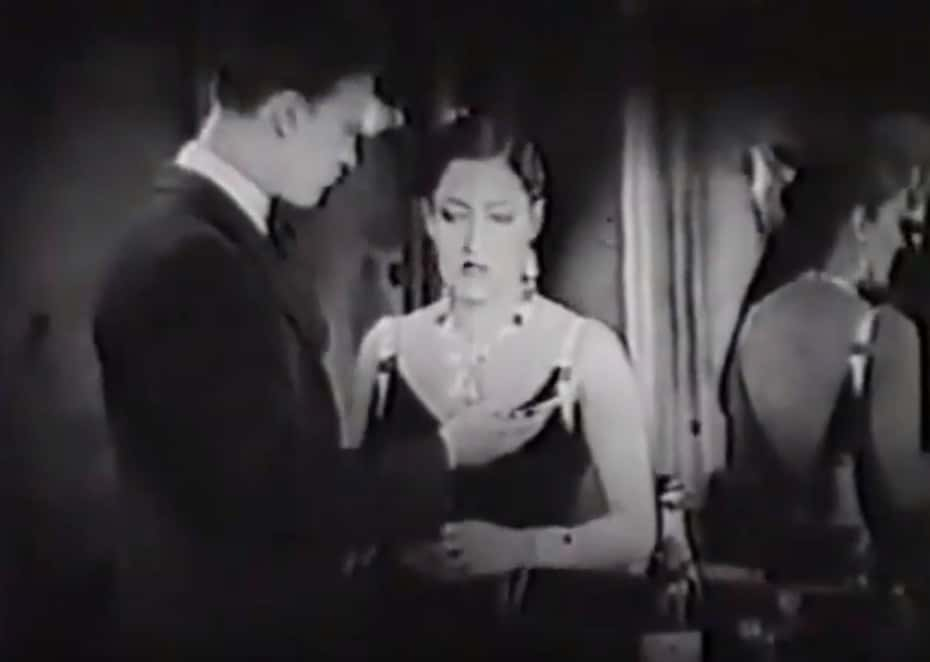 The Love of Sunya (1927), United Artists
The Love of Sunya (1927), United Artists
82. It’s My Turn
Swanson was looking for a movie that would be as big, if not bigger, than Charlie Chaplin’s Gold Rush, which had been a huge hit in 1925. Her answer was the film Sadie Thomas, a drama about a “fallen woman” who flees to Samoa and meets a missionary who tries to bring her back to San Francisco. The subject matter made the film hugely controversial—but it also didn’t stop it from becoming a huge hit.
 Sadie Thompson (1928), United Artists
Sadie Thompson (1928), United Artists
83. Fudging the Truth
Swanson wanted to avoid the formulaic movie plots that she’d been dealing with for the last decade, so she chose a play so controversial that it had been blacklisted—but she had a devious plan to get it made. Swanson took infamous censor Will Hays out for lunch and summarized the play for him, changing the names and major details about the plot before getting him to promise that he’d have no qualms with making the type of film she’d described.
Her gambit paid off—but her troubles were far from over.
84. Downs and Ups
The play's authors were furious about Swanson’s modifications, and they weren't the only ones. When it became clear what the play was really about, Hays had the Motion Picture Association of America send a series of threatening telegrams to Swanson. She appealed to them and to theater owner Marcus Loew, and after a period of silence, decided to go on with production.
85. It Worked!
There were many bumps along the road, but Sadie Thomas was eventually released to great praise and financial success—although it would be Swanson’s last financially successful silent film. As previously mentioned, she was also nominated for the very first Best Actress Oscar for the film—but the film brought Swanson more than just success and acclaim.
86. Running Hot ‘n’ Cold
One of the signees of the threatening telegram from the MPAA had been none other than Joseph P. Kennedy, father of future President John F. Kennedy. He went on to advise Swanson during the production of the film, telling her to sell her distribution rights for Sadie Thomas. Once the film was a success, Swanson realized that she'd just made a terrible financial mistake—regardless, the two started a passionate affair.
87. Mixing Business With Pleasure
The affair between Swanson and Kennedy went on for three years and was an open secret in Hollywood. At one point, Kennedy even gave Swanson’s husband, the Marquis de la Falaise, a job at his film studio—but many speculated that he just did it to get the Marquis out of the way. During their time together, Kennedy produced three films that Swanson starred in.
88. The Talkies Are Coming
At the advent of sound pictures, Swanson and a number of other silent stars appeared on a radio show to reassure the public that they were ready to make the transition from silent film to talkies. While Swanson’s first talkie, the Kennedy-produced The Trespasser, was a hit, earning Swanson another Oscar nod, her career soon began to fade.
 The Trespasser (1929), United Artists
The Trespasser (1929), United Artists
89. Big Changes
After a three-year extramarital affair with Joseph P. Kennedy, Swanson finally divorced Henri, Marquis de la Falaise—although it didn’t mean happily ever after for her and her paramour. She and Kennedy broke up as well. After a lot of poor financial advice from Kennedy, she was in bad shape—but when it came to romance, not even a double breakup could slow Swanson down.
90. Infamy and Bigamy
While Swanson initiated her divorce from the Marquis in 1930, she was so impatient to move on that she neglected to wait for the paperwork to be finalized before marrying athlete the Michael Farmer in August 1931. This meant that their marriage was null, so they had to wed again in November 1931—at which point she was already four months pregnant.
91. So, Fourth Time Isn’t the Charm Either
Swanson gave birth to her first child, Michelle Bridget Farmer, in 1932—but it would be far from happily ever after for Swanson’s little family. She and Farmer divorced in 1934, when their daughter was still just a toddler—all because Swanson was hiding a dark secret.
92. Can’t Keep Away
Swanson had begun another extramarital affair while still married to Farmer—this time, with British actor Herbert Marshall. This time, she couldn’t keep the affair from the tabloids. After her divorce from Farmer, she kept seeing Marshall.
93. Truth Hurts
Swanson’s affair with Marshall went on for three years, until she made a heartbreaking realization. She had been under his spell, but he still hadn’t left his wife for her—and she began to understand that he never would. Years later, Swanson still wasn't quite over their failed romance. As she later put it, "I was never so convincingly and thoroughly loved as I was by Herbert Marshall."
94. Break-Up to Glow-Up
The lull in her career at the advent of the talkies left Swanson disinterested in film, and packed up and moved to New York, where she began a business that wasn’t only successful, but also heartbreaking in its noble intentions. During WWII, her company Multiprises helped rescue Jewish scientists and inventors, bringing them over to the US from Europe.
95. Name a Better Boss, I Dare You
The infamous last scene of Sunset Boulevard featured Norma Desmond descending her home’s grand staircase to meet a crowd of tabloid photographers and police—who, in her delusion, she believes to be fans. In order to make sure she didn’t trip, Swanson did the scene barefoot. Her performance was an absolute tour de force, and when it was done, Swanson burst into tears.
It was so clearly an instant masterpiece that director Billy Wilder threw a party for Swanson on the spot.
 Sunset Blvd. (1950), Paramount Pictures
Sunset Blvd. (1950), Paramount Pictures
96. The One That Stuck
When Swanson took a break from Hollywood, she also took a break from back-to-back marriages. Between her fifth and sixth marriages, Swanson was single for 30 years—but she made the final one last. Swanson met author William Dufty in 1965. By 1967 they were serious, but perhaps because of her checkered romantic history, she was cautious.
They waited until 1976 to marry, and stayed together until she passed.
97. Spilling the Beans
In 1980, Gloria Swanson released her epic 520-page autobiography—the appropriately titled Swanson on Swanson. Most autobiographies or biographies about Old Hollywood stars are as dry as they come, but Swanson didn’t hold back. No wonder she delivered so hard—she was said to have received a cool million in her book deal.
The best-selling book dropped a number of Hollywood bombshells—but one was bigger than any other. Swanson had disavowed her affair with Joseph P. Kennedy for years, but in her book, she finally revealed the truth. After decades of denial and silence, she finally confessed that she and Kennedy been each other’s side pieces for years in the 20s.
98. No One Leaves a Star—Except Gloria
Around the time of her 84th birthday, Swanson took a holiday on the Portuguese Riviera. On April 4, 1973, just after returning home to New York, she passed away from an unspecified heart condition. Dufty showed his devotion with a heartbreaking gesture. While Swanson and Dufty had been world travelers, with homes or pied-a-terres in New York City, Rome, Portugal, and Palm Springs, Dufty returned to his home state of Michigan after Swanson’s death and never remarried.
99. Tall Tails
In her autobiography, Swanson certainly amped up the drama when it came to telling her readers about the lions, talking about how dangerous they were—but one story was more chilling than the others. Swanson claimed that two weeks after filming was done, one the lions that she had appeared with in Male or Female killed someone.
 Male and Female (1919), Paramount Pictures
Male and Female (1919), Paramount Pictures
100. Think Marilyn & JFK Were the First? Think Again
It was Old Hollywood, and nobody escaped without some sort of scandal—but Swanson’s secret affairs went beyond the usual cinema scandals. For three years in the 1920s, Swanson carried on a poorly-concealed affair with the politician and businessman Joseph P. Kennedy, father to future president John F. Kennedy. Both Swanson and Kennedy were married to other people at the time.
101. Rocky Start
During the early part of her career, Swanson was hiding an incredibly dark secret. When she was just 17, Swanson married fellow actor Wallace Beery—but according to Swanson, her own new husband assaulted her. To make matters even worse, he even hurt her on their wedding night.
102. All in the Family
Elisabeth Amalie Eugenie was born on Christmas Eve, 1837 to Maximillian and Ludovika of Bavaria. The young royal had a far from normal childhood: Her father Maximillian was a notorious eccentric, and the little girl grew up in a chaotic environment that encouraged country horse rides over formal education.
103. Sisi My Playmate
Growing up, Elisabeth’s loved ones nicknamed the observant, sensitive girl “Sisi.”
104. She’s The One
Elisabeth was never supposed to become an Empress. Her older sister Helene was originally betrothed to the young Emperor Franz Joseph of Austria, but it all changed when the 15-year-old Elisabeth accompanied Helene to their first meeting and formal proposal. The moment Franz Joseph laid eyes on Elisabeth, he swore he would marry none but her.
105. Wanderlust
The Empress Elisabeth was a fundamentally restless woman. She loved being by herself, and valued her independence and freedom above all else. As she once said, “If I arrived at a place and knew that I could never leave it again, the whole stay would become horrid despite being paradise.”
106. A Twist of Fate
According to lore, a wardrobe malfunction won Elisabeth the crown over her sister Helene. Somewhere along their carriage journey, the coach carrying their formal gowns got lost. As it happened, the family was in mourning for an aunt, and without a change of clothes, they were forced to wear their black widow’s weeds to the meeting.
Unfortunately for Helene, her coloring was sallow next to the dark cloth—but the black made Elisabeth’s pale, golden complexion sing.
107. Teen Queen
Franz Joseph and Elisabeth wasted no time after their meet-cute. The palace officially announced their betrothal five days after the meeting, and they married just eight months later on April 24, 1854. At the time, Elisabeth was barely 16 years old and already the Empress of a mighty realm.
108. Monster-in-Law
There are horrific mothers-in-law—and then there was the Archduchess Sophie of Bavaria, Franz Joseph’s legendarily domineering matron. An absolute force of nature, Sophie more than earned her nickname of “the only man in the Hofburg palace.” Unfortunately, her meddling would soon damage Elisabeth in more ways than one…
109. One and Done
19th-century birth control was sorely lacking, and a shocked Empress Elisabeth found herself pregnant almost immediately after her wedding. The naïve teenaged Empress gave birth to a baby girl, Sophie, just 10 months after her special day.
110. After the Fairy Tale
Elisabeth won her Emperor, but it was hardly happily ever after. She quickly installed herself in formal Habsburg court life, but the free-spirited girl was completely unused to the cold, dour atmosphere of royal life and its endless rules of etiquette, especially in comparison to her rag-tag upbringing.
111. The Girl Is Mine
Elisabeth’s mother-in-law Sophie always looked down on her, but motherhood made it so much worse. Sophie dismissed her as “a silly young mother,” and went ahead and named the new baby after herself without asking. To rub salt in the wound, she also refused to let Elisabeth see, breastfeed, or care for her newborn. Then she did the same with her second granddaughter Gisela.
112. Mama’s Boy
Emperor Franz Joseph was completely in love with the beautiful Elisabeth—but he was in for a rude awakening. Truth be told, Elisabeth didn’t reciprocate his feelings at all. The sharp, quick-witted introvert was constantly in search of a new subject to conquer. She found Franz to be a dull, unimaginative, and stale man under mommy’s thumb.
113. A Real Bodice Ripper
Elisabeth’s obsessive trimness also manifested in an infatuation with “tight-lacing,” where women wore their corsets so tight that it made them wasp-waisted. The young Empress outsourced special rigid corsets all the way from Paris—used specifically by courtesans—to achieve the sucked-in look. Reportedly, lacing them up took a full hour.
114. I’m Sick of This
The stresses of her position took an enormous toll on Elisabeth’s health. She was naturally a little reserved and introverted, and palace life made her anxious. Within weeks of moving into the royal castle, she developed frequent coughing fits and couldn’t even descend staircases without suffering panic attacks.
115. Sons or Anarchy
One day, Empress Elisabeth walked into her study where she made a chilling discovery. On her desk was a small pamphlet that had some choice, cruel passages underlined: “The natural destiny of a Queen is to give an heir to the throne,” it read. “If the Queen bears no sons, she is merely a foreigner in the State.”
The suspected source of this obscenely vicious broadside? I’ll give you three gue—Sophia. It was totally Sophia.
116. Rise and Grind
Elisabeth’s exercise regime was unbelievably demanding. She insisted that every castle she lived in have a gymnasium for her to perform her routines, and her private bedchamber at Hofburg Palace was even equipped with balance beams. On top of that, she was obsessed with doing her routines perfectly. Most of her gyms came with mirrors so she could correct herself as she went.
117. Picky Eater
Never a prodigious eater, Elisabeth eventually developed a total aversion and disgust for meat. To get protein, she often just squeezed steak juice into her soup and called it a day.
118. Vile Vienna
By the 1860s, Elisabeth despised Vienna and her royal life so much that many historians believe her frequent coughing fits and panics were partly psychosomatic. It got so bad that she stayed away from the capital for a full two years. The moment she returned, she experienced a migraine in the carriage and puked four times—all on the way there.
119. Bad Habits
The hyperactive and often sleepless Elisabeth took up smoking to make the wee hours pass by. Her manly habit shocked polite court society at the time.
120. We’re All Mad Here
Elisabeth was a true eccentric, but many people whispered that her mental troubles were much darker than she let on. After all, she was cousins with the infamous mad King Ludwig II of Bavaria, and she seemed to take a deep interest in the mentally ill. One day, when her husband asked her what she wanted for a gift, she replied brightly:"...a fully equipped lunatic asylum would please me most."
121. It’s a Boy!
On August 21, 1858, Elisabeth finally shut her mother-in-law’s mouth and gave birth to a baby boy, the Crown Prince Rudolf of Austria. The happy news came with a 101-gun salute and the blossoming of Elisabeth’s full political power at court. Yet like all of her other children up to that point, Elisabeth had almost no say in Rudolf’s upbringing.
122. A Hairy Issue
Elisabeth’s exercise regime may have been daunting, but it had absolutely nothing on her beauty routine. As an adult, her chestnut brown hair grew to truly epic lengths and required a small army of people to maintain. She got frequent headaches from the weight of her updos—which took three hours to create—and scheduled an entire day off every two weeks just to wash her locks in a mixture of eggs and cognac.
123. Power Play
At the height of her powers, Elisabeth was one of the key ambassadors to Hungary, though some say her desire for peace hid a dark secret. One of Elisabeth’s main contacts was the handsome Count Gyula Andrassy, who some believe was her lover. Elisabeth even pushed her husband to make Andrassy Premier of Hungary, once threatening him “...If you say 'No,’…you will be relieved forever from my future.”
124. No Means No
The Empress frequently withheld physical intimacy from her husband. Why? Well, she was often ailing, either with stress symptoms or real illnesses related to her malnutrition. Of course, there was also the fact she had zero hots for Franz Joseph. Oh, and she lived in fear of another pregnancy ruining her figure, confessing that "Children are the curse of a woman, for when they come, they drive away Beauty.” That’s…a lot of reasons.
125. Like Mother, Like Son
Though their relationship was sometimes strained, Elisabeth and her only son Rudolf were eerily alike in many ways. He too was stubborn, introverted, and largely uninterested in artifice. Moreover, he departed from his father’s conservative political views, taking up Elisabeth’s more liberal beliefs instead. Sadly, mother and son never enjoyed a close connection.
126. Fourth Time’s a Charm
Empress Elisabeth only had a fourth child when she wanted a fourth child. That is, after Hungary and Austria finally reached an agreement and she and Franz Joseph became King and Queen of Hungary. Once that happened, she knew it would be politically advantageous to birth an heir in Budapest, and that’s exactly what she did.
Little Marie Valeria was born in the Hungarian metropolis in 1868.
127. The Only Child
This time, Empress Elisabeth demanded that she take over caring for her child. In a tragic twist, her plan backfired horribly. Deprived of her maternal instinct for years, the once emotionally withdrawn empress now smothered her youngest daughter. People at court snidely called Marie Valerie “The Only Child” because of how Elisabeth doted on her.
128. The Worst of Times
The late 1800s were cruel to Empress Elisabeth. In the four-year span from 1888 to 1892, she lost her father, her mother, her sister, her only son, and also her beloved Gyula Andrassy. Upon Andrassy’s death, the broken Elisabeth reportedly cried out, “My last and only friend is dead.”
129. I Wear Black on the Outside, Because Black Is How I Feel on the Inside
For her remaining years after her son Prince Rudolf’s death, Elisabeth almost exclusively wore black. When she was in public, she used a fan and a parasol to cover her face from prying eyes.
130. Royal Hall Pass
Elisabeth mostly avoided her husband’s bed, so she was generous enough to turn a blind eye when it came to his many affairs, including with the beautiful actress Katharina Schratt. In fact, she generally encouraged these dalliances.
131. Breaking the News
When her son Rudolf died, the Empress was one of the first people who found out. The grieving mother had to tell Franz Joseph the horrific tidings herself.
132. The Hermit Habsburg
After she turned 32, Elisabeth absolutely refused to sit for any more photos or portraits, preferring to live in eternal, youthful beauty in the public’s imagination.
133. Fearing the Worst
Elisabeth’s mental health was so fragile throughout her life that when her husband Franz Joseph first received the news that she died, he was afraid that it was suicide.
134. Burying a Child
In 1857, Elisabeth endured a mother’s worst nightmare. Her two daughters Gisela and Sophie became ill with diarrhea, and while Gisela slowly got better, Sophie only got worse. Eventually, the two-year-old girl fell victim to a terrible death, probably from typhus. Elisabeth was still a teenager, yet she was already mourning the loss of her baby.
135. Getting Away From It All
Little Sophie’s death threw the already neurotic and fragile Elisabeth into the throes of a deep depression that would haunt her the rest of her years. Sadly, that was far from the worst part. Elisabeth even began to withdraw from her daughter Gisela, neglecting the girl when she needed her mother most. The pair were never close again.
136. The Mayerling Incident
On January 30, 1889, Elisabeth suffered her worst blow yet—and tragedy doesn’t even begin to cover it. That fateful day, her only son Rudolf committed suicide in a love pact with his teenaged mistress. The event, now known as the Mayerling Incident, threw the Austro-Hungarian line of succession into a tailspin. Closer to home, it also utterly broke his mother’s heart.
137. Alone and Vulnerable
Just before the turn of the 20th century, Elisabeth’s informality doomed her to a gruesome end. In 1898, she was traveling anonymously through Geneva, Switzerland and decided to catch a ship to a nearby city without any entourage—despite hearing reports of assassination plans. After all, this was right before World War I, and political tensions were at an all-time high.
Because of her decision to forgo any pomp or circumstance, she only had one lady-in-waiting with her when the grim reaper came knocking.

138. Didn’t See It Coming
When anarchist Luigi Lucheni heard through a newspaper that Elisabeth was in town under a fake name, he devised a chilling plan. Lucheni found her walking on a promenade toward her ship, almost entirely alone. He went up, peered under her parasol, and struck her in the heart with a crude four-inch needle file. Within moments, she collapsed and was weaving in and out of consciousness as people rushed to help.
139. The Queen Is Dead
Elisabeth’s last moments on Earth were full of confusion. After her collapse, attendants tore open her bodice laces but could only see a minuscule incision above her left breast. By the time they got her back to her hotel, she was already dead. One witness even swore the Empress drew her last two breaths just before entering her room.
They pronounced her dead at 2:10 pm on September 10, 1898. She was 60 years old, and had ruled the Austrian empire for 44 years.
140. Last Words
Just before dying, Elisabeth regained consciousness for one last time. Her rescuers asked her if she was in pain, and she replied “No.” Instead, her final words broke their hearts. The innocent royal meekly asked, “What happened?”
141. An Anatomy of Murder
The Empress’s official autopsy revealed heartbreaking findings. Lucheni’s aim was deadly accurate, with the needle penetrating over three inches into her thorax, fracturing her rib, puncturing her lung, and then piercing her heart. Notably, her tight corset prolonged her life for a precious few minutes by stymying the internal hemorrhage.
142. A Macabre Memento
There used to be an official photograph of the Empress’s fatal-wound, but the Emperor destroyed it.
143. Just Shoot Me
In the aftermath of Empress Elisabeth’s brutal death, the courts sentenced Lucheni to life imprisonment—a fact that enraged the devoted anarchist, since he hoped to be executed. Eventually, Lucheni got his wish by other means. On October 16, 1910, he succeeded in killing himself in his jail cell.
144. Heavy Is the Head That Wears the Crown
Though Lucheni’s assassination plot was senseless to many of Elisabeth’s mourners, he had dark reasons for his deed. He was desperate to kill any political figure he could; Elisabeth was merely tragic collateral. As he said, “I came to Geneva to kill a sovereign...It was not a woman I struck, but an Empress; it was a crown that I had in view.”
145. Their Ship Came In
Nancy Cunard was the heiress to the extravagantly wealthy Cunard family. The Cunard Line, founded by Samuel Cunard in 1840, was the most famous shipping firm of the age. Sadly, the phrase "poor little rich girl" doesn't come from nowhere. Despite her luxurious upbringing, Cunard was painfully isolated as a child.
146. New Money
Cunard’s father, Sir Bache Cunard, was the 3rd Baronet Cunard of Bush Hill. The Cunards were by no means an old and noble family: the Cunard Baronetcy was created in 1859 in recognition of Samuel Cunard’s standing as a shipping magnate. In other words, the Cunards had money...and they used their sweet, sweet cash to buy nobility.
147. End of the Line
Nancy Cunard was an only child and a girl, and because of this, she entered adulthood with a cruel betrayal. When her father passed, the Baronetcy did not go to Nancy but to her uncle, Gordon. Ouch.
148. Town and Country
Nancy’s mother, Maud, was an American heiress 21 years Bache Cunard’s junior. Known to her many admirers as “Emerald,” Maud was a famous hostess in her day, renowned for her scathing wit. Less happily, Maud and Bache had little in common, and spent largely separate lives. While Bache hunted from his country cabin, Maud hosted parties for artists and society types from her London apartment. They separated in 1911, and Nancy, then just 15, moved to London with her mother permanently.
149. Who’s Your Daddy?
After the separation from Bache, Maud began a relationship with the composer Thomas Beecham. This was disappointing news to the writer George Moore, who had engaged in a long affair with Maud. But that's not even the most dramatic part of Maud's extra-marital activities. Some even suspected that it was Moore, not Bache Cunard, who was Nancy’s father.
 Wikimedia Commons Thomas Beecham[/caption]
Wikimedia Commons Thomas Beecham[/caption]
150. Honeymoon’s Over
In 1916, Cunard tried to be the proper lady that her family wanted. She dressed in delicate, fashionable clothing and even went so far as to get married to Sydney Fairbairn, a professional cricket player. They lived together in a London home gifted to them by Cunard’s mother, but the marriage was short-lived. Not even two years into the union, Cunard shocked her family by demanding a divorce. This rebellious streak would define her entire life.
151. Bad Influences
Through her friend, the poet and model Iris Tree, Cunard was introduced to the Coterie, a group of upper-class libertines whose wild parties frequently made the press. While the primary business of “the corrupt Coterie” was drinking and partying, it did provide Cunard with witty, intellectual conversation, stimulating her latent literary talents.
152. The Unknown Soldier
During the war, Cunard began an affair with Peter Broughton-Adderley. Like Cunard’s estranged husband, Sydney Fairbairn, Broughton-Adderley was a cricket player enlisted in the British army. Just one month before the war ended, utter tragedy struck. Brougthon-Adderley was killed in France. Cunard supposedly never got over this loss.
153. The Wheel Starts Rolling
A young Cunard decided to try writing poetry. She contributed the title poem to the first installment of Wheels, an annual anthology put together by literary siblings Edith, Osbert, and Sacherevell Sitwell. Cunard’s best friend, Iris Tree, also contributed to the anthology.
154. Brave New World
A young Aldous Huxley also placed writing in Wheels, but neither he nor Cunard realized that this was just the beginning of their intense relationship. The future author of the influential dystopian novel Brave New World had a brief affair with Cunard. Evidently, Cunard enjoyed their fiery fling—it was just the first of her many notable literary affairs.
155. Quite the Character
While the short-lived relationship was just one of many romances for Cunard, the passionate affair had a lasting effect on Huxley. Many of his novels would be influenced by the relationship, with Cunard serving as the model for characters in novels like Antic Hay and Point Counterpoint. Because of Huxley's work (and more that we'll discuss later on), Cunard was a famous muse in the 1920s.
156. Spilling the Ink
Cunard’s list of lovers is a who’s who of the early 20th-century literary world. She was linked, at one time or another, to Ezra Pound, Wyndham Lewis, Louis Aragon, and Tristan Tzara, among others. But not everyone had good things to say about her when the flame went out. One partner, the poet Richard Aldington, compared Cunard to “a lecherous octopus.” Another wrote that he thought she derived "personal satisfaction" from hearing that a lovelorn man might kill himself over her.
157. Prince Charming
According to one of Cunard's biographers, Cunard even caught the attention of Edward, Prince of Wales, and the future King Edward VIII. Had Cunard reciprocated the prince’s feelings, she could have gone on to become the queen of England. But playing by the prim and proper rules of the royal family was never in the cards for someone like Nancy Cunard.
158. Emergency Surgery
In 1920, Cunard nearly lost her life. She underwent an emergency hysterectomy and appendectomy, the reasons for which have never been explained. What we do know, however, is that the operation nearly killed her and had terrible consequences. Of course, she could no longer have children, but even worse, the operation was so traumatic that many people speculated that it caused Cunard to develop a life-long habit for drugs and alcohol.
159. Modern Love
In 1928, Cunard began a relationship with jazz musician Henry Crowder. The idea of one of the wealthiest white women in Europe dating an African American jazz musician was shocking and undesirable to many in Cunard’s social sphere, including her own mother. Her response to the news was ice cold. She asked, “Is it true that my daughter knows a Negro?”
160. Getting Woke
Cunard herself would later say the relationship “made” her. Crowder was instrumental in alerting Cunard to the struggles and prejudices faced by Black people in both North America and Europe, as well as the burgeoning Civil Rights movement. With Crowder’s support, Cunard began exploring and promoting Black literature, while advocating publicly for civil rights causes.
161. Love Letters
Cunard’s relationship with Crowder was met with curiosity, scandal, and even mockery. Furious about this response, Cunard decided to take matters into her own hands. She published a pamphlet, defending interracial relationships and reflecting on the idea of interracial romance and anti-racism. Black Man and White Ladyship was published in 1931.
162. In Their Defense
Among Cunard’s most devoted causes was trying to secure the release of “the Scottsboro Boys,” nine Black teenagers who had been falsely accused of assaulting two white women in Alabama. Cunard organized the British Scottsboro Defense Fund, a charitable organization that demonstrated and raised money for the defense. Fellow writers Rebecca West and Virginia Woolf also supported the fund. Despite their best efforts, the Scottsboro Boys were convicted.
 Wikimedia Commons, Brian Stansberry
Wikimedia Commons, Brian Stansberry
163. Antifa
Cunard considered herself, at times, a communist, and at other times, an anarchist. She supported a number of anti-fascist causes. Throughout the second World War, she worked as a reporter and as a translator for the French Resistance. An anthology of poems celebrating France, compiled by Cunard in 1944, got her placed on Adolf Hitler’s personal enemies list.
164. End of an Era
Cunard and Crowder shared a passionate love, but sadly they went their separate ways in 1936. Crowder spent over a year in PoW camps in Brussels and Germany, then retired from performing and returned to the United States. Years later, he dealt Cunard a brutal betrayal when he published a scathing book about their relationship. Crowder lambasted Cunard as an ignorant and angry alcoholic. He also said that not only did she have affairs, she flaunted her trysts in Crowder's face. Ouch.
In the meanwtime, Cunard remained in France throughout the war, before leaving the country to travel.
165. If the Shoe Fits
Cunard’s later life was marked by struggles with mental illness and alcoholism. She suffered bouts of paranoia brought on by alcohol, and was even briefly incarcerated in a mental hospital after throwing her shoes at two police officers in London. Always thin, her svelte frame wasted away into emaciation. When Cunard died, she weighed just 57 pounds.
166. A Hard Ticket
Cunard returned to France following her release from London’s Holloway Sanitorium, but fared little better. Up her return, it became clear that she was not much better. En route, security ordered her to get off a train when she opted to sit on the floor and eat her ticket rather than give it to the conductor.
167. The Streets of Paris
In 1965, a passer-by found Nancy Cunard unconscious on a street in Paris. Once one of the wealthiest women in the world, Cunard was completely penniless. An ambulance took her to a nearby hospital where she awoke and, though weak, struggled to write an anti-war poem. But sadly, she died just two days later. The hospital listed Cunard's official cause of death as emphysema, brought on by years of heavy smoking.
168. In Good Company
Cunard’s body was returned to England for cremation, then returned to Paris. Her final resting place is the Cimetière du Père-Lachasse in Paris, alongside many other great artists.


